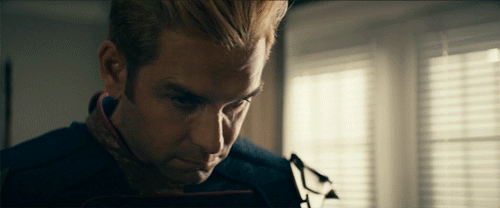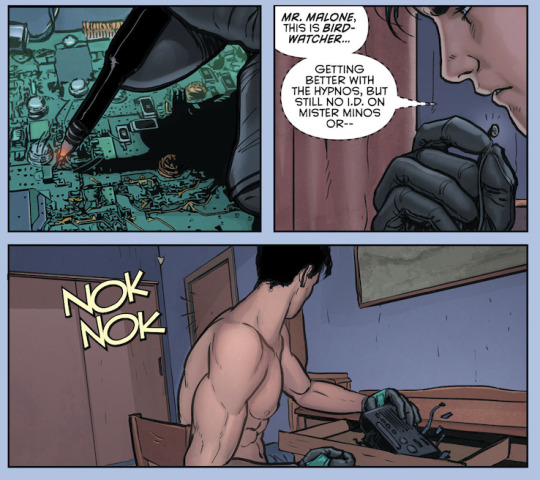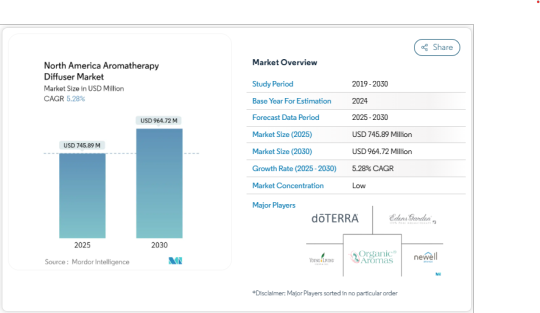#Nebulizer Market Demand
Explore tagged Tumblr posts
Text
Guilty Pleasures ( chapter two )

18+ 3.8k homelander x plus size f!reader. workplace harassment, stalking, voyeurism, masturbation, lite humiliation kink, lite somnophilia, breaking & entering, petty theft, sublander flavored. nebulously takes place post s1. part 2/4. AO3 link. | Chapter Directory
Homelander is the most powerful man in the world, and all he wants is to be yours.

After spending the majority of your evening and the following morning anticipating being fired, walking into work the next day feels like traversing a thinly frozen lake, each step webbing out in precarious cracks.
Clearly you’re not the only one who thinks so: you clock a handful of surprised looks from coworkers who’d attended the meeting and took note of the tension between you and Vought’s golden boy.
Maybe they’d taken bets on whether or not you’d be coming in this morning.
There’s no sign of Homelander on your way in. Not that you were expecting him–yesterday was the first time you actually saw him in person–but you still find yourself on the lookout. It’s hard to say whether you’re anticipating or dreading him. Part of you is still expecting to open your door and find a letter on your desk politely informing you that they’ve determined you aren’t a good “culture fit” for the company, and that your probation has been terminated.
After all, who in their right mind would take your side over Homelander’s?
You push open your office door, and sure enough, there is a letter waiting for you, but not in the way you expected. You stand in the doorway, staring in quiet incomprehension. The envelope, crisp and bright white, is propped up in a bed of rich red roses sitting in a pretty vase upon your desk. You glance behind you before you step inside, closing the door behind you, and approach the desk cautiously. You pluck the paper out of the bouquet, taking a moment to smell the flowers–they smell as good as they look–before you carefully rip open the envelope, tearing the small american flag sticker that sealed it.
Inside, there’s only one word on the folded piece of paper, scrawled in surprisingly elegant handwriting.
Truce?
You can’t help the incredulous little bark of laughter you give at that. It’s not even an apology. It’s a demand that he expects a gratuitous bundle of flowers will help you swallow, like taking medicine with a spoonful of sugar.
“You’re ridiculous,” you say quietly to the letter, setting it down on your desk. You give the roses one last sniff, testing one of the soft petals between your fingers. You wonder if what you said actually got through to him.
Homelander has no real reason to smooth things over with you: you’re no one. He’s posed no risk to himself by coming after you. He could no doubt have you fired by complaining that your marketing tactics don’t align with his brand. It’s hard to imagine Vought denies him much.
Yet he is apparently negotiating peace. It’s not nearly enough, but it is a start.
Or maybe it’s just more than you expected.
You sit, idly tapping the letter against your desk. You’d be lying to yourself if you said you didn’t still think him handsome. Homelander wasn’t the first man to ogle your tits while you gave a presentation, but he was certainly the first to fluster you like that when he did. His sly smile had made you want to slap him, but there was a questionable little part of you that thought about kissing it better afterwards.
Taking in a steadying breath, you slip the letter into your desk drawer and adjust the flowers to the side, admiring them a moment before you pull out your laptop.
If Homelander can behave himself enough to let you do your job without public humiliation, you can afford a truce. You don’t need to forgive or condone him to be civil, or even to continue having your own private fantasies. A little guilty pleasure now and again never hurt anyone.
You can’t know that Homelander is observing you throughout this internal conversation, watching through several layers of steel and concrete, his parted lips curving into a slow smile as you accept his offering. You can’t know that you haven’t just acknowledged a truce, but an invitation.
No, you can’t possibly know what’s to come.

Two days later, you diligently change the water that the roses in your office sit in. They’re doing well, the crimson buds having unfurled into a splay of velvety petals. You pinch one between your thumb and forefinger and stroke it absently. Homelander has continued to be a scarcity, but that doesn’t mean you haven’t seen him. Quite the opposite: you spend most of your working hours either looking at or thinking about his face to the point where it’s starting to follow you home each day.
That’s what you tell yourself when you think of him outside of work hours, anyways.
It’s been long enough now that you wonder if the flowers were the end of it. He was simply covering his ass with a half hearted gesture that slightly resembled an apology so that you could both comfortably drop the subject. That was entirely fine by you so long as he actually did improve his behavior.
A familiarly brisk knock at your door catapults your heart up against the cage of your ribs like a spooked hare. It’s the exact same beat, you’re sure of it. You stay quiet, half expecting to be barged in upon, but when nothing happens, you move from your desk and open the door yourself, intentionally blocking it with your body.
Sure enough, Homelander stands tall on the other side. He flashes his signature smile while your eyes narrow suspiciously. “Can I help you?”
“I think I’m the one who can help you,” he says brightly, that spread of teeth downright wolfish. He lifts a handful of papers that have been stapled at the corner, gesturing for you to take it.
Still wary, you take them from him and shift, wedging your foot to keep the door firmly in place while you flip through the pages. Your brows furrow as you recognize chunks of your own presentation. Understanding dawns when you realize that he’s annotated them.
“You read my presentation,” you say, unable to mask your surprise.
“Obviously. It’s my image on the line, right? Got some notes for you, but I have to say: y’mostly nailed it,” he says, reaching out to rest a gloved hand on the doorway.
“Mostly?” You echo, quirking an eyebrow at him as you look up from the pages.
“Yeah, mostly. Again, I have some minor notes,” he says, wiggling his other hand in a vague gesture. “But I figure I owe you praise on a job mostly well done.”
You’ve got to be kidding me.
Crossing your arms, you abandon your stern foothold on the door in order to shift your weight, your incredulity showing in every inch of your body language. “What you owe me is an apology.”
Homelander’s grin softens into a smile that’s no less challenging. “Looks to me like you’ve already been enjoying my apology,” he says, leaning slightly to gaze past you, to the bundle of roses sitting prettily on your desk.
You briefly glance over your shoulder, but your expression remains impassive. Unimpressed. “That? That isn’t an apology. An apology would include the words I’m sorry.”
He scoffs a dismissive laugh, swaying back to look away, but you persist.
“I’m serious,” you say, luring his ocean blue gaze back to yours. “I want you to say to me ‘I’m sorry for the way I behaved during your presentation. It won’t happen again.’ “
The two of you hold each other’s gaze with all the magnitude of two gunmen in a duel, hands steady over your proverbial pistols.
To your surprise, Homelander does not fire back. He raises a dainty white flag.
“I’m sorry for the way I behaved during your presentation,” he says, words slow and measured. You watch his tongue flash over his bottom lip, wetting it attractively. You fight to not let your eyes linger on it. “It won’t happen again.”
You swallow, suddenly finding thought and speech an impossible task. You weren’t prepared for such raw, ready obedience from him, nor the intensity in his gaze that follows it. He reminds you of a charmed snake–docile so long as he is transfixed.
“Good,” you say, the word half a sigh. Homelander’s lips part and he breathes in like he’s caught wind of something particularly delicious smelling. “I accept your apology, and I appreciate that you took the time to do this,” you say, gesturing with the documents in your hand. “I’ll go over them and get back to you.”
He reaches out, bracing his hand on your office door. You half expect him to push it open, but he merely holds it there. “We could go over them together,” he suggests slyly.
“No,” you say, clearly disarming him. He looks as though he’s forgotten the meaning of the word. “I’m in the middle of another project at the moment.”
The leather of his gloves creaks faintly in your ear as he flexes his grip on the edge of the door. While what you’ve said is true, it’s also serving as a test. Words and flowers are pretty things, but only actions always speak the truth.
“At the moment,” he repeats, gears visibly turning in his eyes. “So… Later?” He extrapolates, displaying an uncharacteristic tentativeness alongside his obvious displeasure at the taste of rejection. You even see a glimmer of hope in the mess of his expression..
He did pass the test. You suppose you can reward him for that.
“Another time,” you say, giving your door an exploratory push. He relents, his hands sliding down the length of it before falling away as he takes a half-step back. “How about tomorrow on my lunch break? 1:00 o'clock sharp.”
He splits into a smile that looks more genuine than any of his you’ve seen before. “Aaalrighty-roo. Sounds gooood to meeeee,” he says, drawing out his vowels more the closer he gets to actually having to leave. At your silent, amused stare, he claps his gloved hands together with a muffled thump! and takes a few more steps backwards. “Yooooou’ll see me… tomorrow.”
Your smile pinches along with your brows. What a strange way to phrase it. “See you then,” you say, watching as his face is eclipsed by your closing door. You wait a beat and then let out a thin thread of breath from your pursed lips, resting your weight on the door.
Looking down at the papers in your hand, you push off from the door and head to your desk, flipping through them.
Such a strange man, you think, carrying the notes to your desk. You set them down next to the vase of roses and try not to think too much about the unconscious smile your lips keep settling into for the rest of the day.

Homelander’s got you hook, line and sinker. He’s certain of it. He lingers on the other side of your door just long enough to watch you through it while you settle, a charmed smile set on your lips. He can already imagine how those lips would feel against his own, how they’d taste. He swallows thickly and looks around before he departs, already plotting his next move.
The two of you have a date tomorrow, and in order to be at the top of his game, he’s going to have to do a little additional research. Knowing your work was a good first step. The next one will be learning about you.
Following you home is the easy part. It ultimately feels chivalrous to do so once he realizes you walk home even at this time of year, when the sun sets long before the work day ends. He drifts above you, cocking his head curiously. No wonder you walk. The streets are packed as tightly as sardine cans, and your apartment garage isn’t much better. The claustrophobia of it all serves as a stark contrast to the openness of Vought tower.
The interior of your apartment provides an even sharper juxtaposition to his penthouse. It’s tidy, but the comparatively low ceilings and minimal floor space still make it look cramped. Somehow, you simultaneously have too much and yet not much at all, the confinement of a downtown apartment making what minimal affects you do own seem crowded together.
That only becomes more apparent once he’s inside, slipped in through your balcony after sleep has taken you. Why would you bother to lock your balcony when you live on the 8th floor? It works out perfectly for him.
In all fairness, your living room feels cozier once he’s standing in the center of it. Your walls are lined with an assortment of art pieces and photographs, and the shelves are well stocked with books and knick-knacks. You have a decent film collection displayed on your media console, and he can’t help but snoop through it, bending at the waist, examining through the rows. He cocks his head.
Odd. You’d think an employee of Vought would have at least a few VCU films. He runs his index finger along the spines, slightly adjusting them flush as he goes. Pursing his lips, he straightens up and looks at the closed cabinets on either side. The left one yields an untidy assortment of electronic odds and ends, cords and the like. Nothing of much interest other than an indication that while you like to keep up appearances, you aren’t quite as together as you’d like people to think.
It’s on the right side, however, he finds what he’s really looking for.
“Bingo,” he whispers, smiling to himself as he scopes out your little hidden collection of Vought hero flicks. Specifically, his films. He’s less interested in the handful of others you own (Queen Maeve: Her Majesty, Black Noir: Insurrection, Lamplighter: The Bright World, etc) and more so in the fact that you have nearly his entire catalog tucked away.
Nearly. You’re missing his eighteen part miniseries, Homelander: Brightest Night.
At least that gives him something to gift you.
Closing the cabinet, he meanders about the rest of your apartment. You have some plants in varying states of decay, with only a few cacti looking to be in decent shape. Either your work keeps you too busy to properly mind them, or you just like the idea of them more than the reality. It tells him that you’re looking–and failing–to fill a void in your life. You want to feel less alone in your home, you want to nurture something. You just haven’t found the right something yet.
Striding into your kitchen, arms folded behind his back, he peers through the cheap wood veneer of your fiberboard cupboards, unveiling an unusually broad assortment of mugs. There doesn’t seem to be any particular theme: holidays, locales, characters, and a menagerie of patterns.
He hums softly, pivoting out of the kitchen and down the hall, his steps preternaturally light. He listens for the beat of your heart as he draws near, tunes it in alongside the shallow cadence of your breath. Deep asleep. Good.
The walls are lined with pictures of you and others. Friends or family, he can’t say, but you look to have an abundance of both. He rarely sees himself in photos that aren’t promotional material. He pauses to straighten a picture frame, and finds himself so viciously jealous of the man sharing the frame with you–his lips pressed to your cheek, your laughing smile so genuine he can nearly hear it–that he almost knocks it to the ground.
Running his tongue along his teeth, he continues on.
Your bedroom door is open. He slips in silently, pausing just through the doorway. Your bed's a queen, too big for just you. You’re sprawled comfortably amidst pillows, limbs splayed in just such a way that he can easily imagine fitting himself in the empty spaces between them. He can smell the lingering burn of the candle you’d lit when you got home. He picks it up off your dresser, reading the label: Cup ‘o Joe.
Eugh. He never cared for coffee, and the artificial sweetness surrounding the note is cloying. Your perfume, on the other hand, he doesn’t mind. He notices the bottle alongside a few other of your things and puts the candle down in favor of that, popping the cap off. The smell hits him before he sprays it: vanilla first, then amber and something more woodsy. It’s less impressive by itself than it had been on you.
Still, it’s yours. You chose it for yourself.
Slipping off one of his gloves, he lightly sprays into the inside of it before he sets the bottle back down, recapping it. It won’t be the same, but he’s driven by the compulsion to spirit away any little pieces of you that he can. Just enough to satiate himself until he can have you properly.
That’s when he sees your blouse from today in a careless heap at the top of your laundry basket next to your dresser. Licking his lips, he tests the feel of the garment between his bare fingers. He’s always been sensitive to fabrics, and while the blend of this one is fairly cheap, it’s been worn and washed enough that it’s soft against his skin. He grabs a handful of it and lifts it to his mouth, brushing it along his lips, under his nose, and he deeply inhales your lingering scent mixing with the fresh pump of perfume.
He bites back a moan, screwing his eyes shut. His cock gives a dull little throb. Fuck, the spell you’ve cast on him makes him ache just for the smell of you, makes him salivate. He swallows it back, letting out a rough little breath as he reluctantly puts the shirt back down. Under it, he spies a little flash of something black and lacy. His stomach clenches, and he’s reaching for it before he can stop himself, fishing the black panties out of the heap and twisting the fabric between his fingers.
Fuck, fuck, fuck.
He can’t afford to overindulge. He won’t be able to control himself if he does, but he also can’t bring himself to put the little slip of fabric back down. He imagines he can almost taste where your sweet cunt had been pressed to it. Christ, he’s practically drooling. Out of sheer impulse, he yanks down the zipper of his pants with a quiet hiss of metal against metal and hastily pushes your underwear into his cup, biting down hard on his lip. He grinds once against his hand, savoring the feel of the fabric against his cock.
He’ll enjoy them far more than you’ll miss them.
Zipping himself back up, he carefully pulls open your top dresser drawer. He curiously pushes the contents around, mindful not to overly disturb, and his knuckles bump something solid. He shifts one of your bras–another near painful pang of arousal at the reminder of your breasts–aside and finds, to his delight, what any good marketing department would describe as “a large purple massage wand.”
A vibrator. He chews his bottom lip briefly, turning it over in his grip. An exciting find on all fronts. It’s smooth and decently hefty, good quality. You deserve even better. You might be capable of indulging yourself with this, but he could make you scream. You’ll never need a silly little toy again. Not when you have him.
Homelander moves to put it back in the drawer, but–
“Fuck!” He hisses when the button catches on his finger, and suddenly the damn thing is buzzing.
Shut up, shut up, shut up, he chants mentally, jabbing at the buttons in an attempt to silence it, but pressing the same ones only makes the accursed device louder. In a frantic move, he grips the neck and squeezes. There’s a soft crunch beneath the silicone, and as abruptly as it had begun, the buzzing ends. His heart is thudding heavily in his chest. He listens to the silence, to you.
He looks over his shoulder. No movement. Your breaths remain shallow.
Christ.
So much for leaving no trace. He slips the busted toy back amidst your underthings and snatches his glove off of your dresser, tucking it under his arm. He hones his attention on you as he approaches your bed, assuring himself that you really are still asleep. He stands there for a while, admiring the part of your lips and the haphazard splay of your pajamas and where they cling to your body.
No bra.
His bare hand flexes. Being so close is too much of a temptation. He wets his lips with a quick slide of his tongue and bends down. He ghosts his fingers just over your cheek, not quite daring to touch. He can smell the faint remnants of your toothpaste on your breath, your shampoo, and beneath it all, you. It's intoxicating, it's…
Your brows furrow slightly in your sleep and you make a soft noise, interrupting his thoughts. He wonders if you’re dreaming–dreaming of him, perhaps. He’d like to think so. He’d like to think that you’re just as affected by him wanting you as he is, and that’s the real reason you invited him to lunch. He saw it in your eyes when he echoed your words, the thrill that went through you. He could have gone to his knees for you in that moment and had you in giving himself to you.
Desperate for just a taste, he kisses ever so gently between your brows, his own breaths matching the cadence of yours. Divine. You're divine. So effortlessly perfect and so aware of your own power. How could he not want every part of you?
He means to leave it there, to walk away with nothing but the slight salt of your brow on his lips, but the pull is too great. He's greedy, drunk on the smell and the taste of you, on the feel of your panties pressed up against his cock, and he can't stop himself from sampling your lips against his.
It’s the barest hint of touch, and yet the contact lances electricity through him like he’s been struck by a bolt of lightning. Your lips are soft, soft, soft. He knew they would be. Everything about you is so fucking soft. It takes everything in him to pull away, standing back to his full height.
He's aching, yearning so intensely he could rip the covers away and take you just like this, shake you awake, declare himself and have you. Would you scream, or would you have that same look of affronted understanding of him? You see him in a way few are ever brave–or stupid–enough to dare.
Not yet.
He won’t spoil the game. He agreed to play by your terms. As far as you’re concerned, he’ll do precisely that. You’ll be none the wiser in regards to his little reconnaissance mission–anything could have happened to your vibrator–and the two of you can play your little game as if you stand on equal footing.
Sucking in a silent breath, Homelander leaves alone, but not empty handed.
He’ll make very good use of his little trophy tonight.
( chapter three )
#i have no self control ENJOYYYYY#praise me it's shocking i finished this so quickly#although it's not really finished bc i'm stretching it into 3 parts but#couldn't help myself i needed him to be a little weirdo#next chapter is already started tho and shouldn't take long!#ALSO I MADE THIS GIF#i'm so happy lol#my writing#homelander x reader#homelander x you#homelander fanfiction#homelander#plus size reader
1K notes
·
View notes
Text
The antitrust case against Apple

I'm on tour with my new, nationally bestselling novel The Bezzle! Catch me TONIGHT (Mar 22) in TORONTO, then SUNDAY (Mar 24) with LAURA POITRAS in NYC, then Anaheim, and beyond!

The foundational tenet of "the Cult of Mac" is that buying products from a $3t company makes you a member of an oppressed ethnic minority and therefore every criticism of that corporation is an ethnic slur:
https://pluralistic.net/2024/01/12/youre-holding-it-wrong/#if-dishwashers-were-iphones
Call it "Apple exceptionalism" – the idea that Apple, alone among the Big Tech firms, is virtuous, and therefore its conduct should be interpreted through that lens of virtue. The wellspring of this virtue is conveniently nebulous, which allows for endless goal-post shifting by members of the Cult of Mac when Apple's sins are made manifest.
Take the claim that Apple is "privacy respecting," which is attributed to Apple's business model of financing its services though cash transactions, rather than by selling it customers to advertisers. This is the (widely misunderstood) crux of the "surveillance capitalism" hypothesis: that capitalism is just fine, but once surveillance is in the mix, capitalism fails.
Apple, then, is said to be a virtuous company because its behavior is disciplined by market forces, unlike its spying rivals, whose ability to "hack our dopamine loops" immobilizes the market's invisible hand with "behavior-shaping" shackles:
http://pluralistic.net/HowToDestroySurveillanceCapitalism
Apple makes a big deal out of its privacy-respecting ethos, and not without some justification. After all, Apple went to the mattresses to fight the FBI when they tried to force Apple to introduced defects into its encryption systems:
https://www.eff.org/deeplinks/2018/04/fbi-could-have-gotten-san-bernardino-shooters-iphone-leadership-didnt-say
And Apple gave Ios users the power to opt out of Facebook spying with a single click; 96% of its customers took them up on this offer, costing Facebook $10b (one fifth of the pricetag of the metaverse boondoggle!) in a single year (you love to see it):
https://arstechnica.com/gadgets/2021/02/facebook-makes-the-case-for-activity-tracking-to-ios-14-users-in-new-pop-ups/
Bruce Schneier has a name for this practice: "feudal security." That's when you cede control over your device to a Big Tech warlord whose "walled garden" becomes a fortress that defends you against external threats:
https://pluralistic.net/2021/06/08/leona-helmsley-was-a-pioneer/#manorialism
The keyword here is external threats. When Apple itself threatens your privacy, the fortress becomes a prison. The fact that you can't install unapproved apps on your Ios device means that when Apple decides to harm you, you have nowhere to turn. The first Apple customers to discover this were in China. When the Chinese government ordered Apple to remove all working privacy tools from its App Store, the company obliged, rather than risk losing access to its ultra-cheap manufacturing base (Tim Cook's signal accomplishment, the one that vaulted him into the CEO's seat, was figuring out how to offshore Apple manufacturing to China) and hundreds of millions of middle-class consumers:
https://www.reuters.com/article/us-china-apple-vpn/apple-says-it-is-removing-vpn-services-from-china-app-store-idUSKBN1AE0BQ
Killing VPNs and other privacy tools was just for openers. After Apple caved to Beijing, the demands kept coming. Next, Apple willingly backdoored all its Chinese cloud services, so that the Chinese state could plunder its customers' data at will:
https://www.nytimes.com/2021/05/17/technology/apple-china-censorship-data.html
This was the completely foreseeable consequence of Apple's "curated computing" model: once the company arrogated to itself the power to decide which software you could run on your own computer, it was inevitable that powerful actors – like the Chinese Communist Party – would lean on Apple to exercise that power in service to its goals.
Unsurprisingly, the Chinese state's appetite for deputizing Apple to help with its spying and oppression was not sated by backdooring iCloud and kicking VPNs out of the App Store. As recently as 2022, Apple continued to neuter its tools at the behest of the Chinese state, breaking Airdrop to make it useless for organizing protests in China:
https://pluralistic.net/2022/11/11/foreseeable-consequences/#airdropped
But the threat of Apple turning on its customers isn't limited to China. While the company has been unwilling to spy on its users on behalf of the US government, it's proven more than willing to compromise its worldwide users' privacy to pad its own profits. Remember when Apple let its users opt out of Facebook surveillance with one click? At the very same time, Apple was spinning up its own commercial surveillance program, spying on Ios customers, gathering the very same data as Facebook, and for the very same purpose: to target ads. When it came to its own surveillance, Apple completely ignored its customers' explicit refusal to consent to spying, spied on them anyway, and lied about it:
https://pluralistic.net/2022/11/14/luxury-surveillance/#liar-liar
Here's the thing: even if you believe that Apple has a "corporate personality" that makes it want to do the right thing, that desire to be virtuous is dependent on the constraints Apple faces. The fact that Apple has complete legal and technical control over the hardware it sells – the power to decide who can make software that runs on that hardware, the power to decide who can fix that hardware, the power to decide who can sell parts for that hardware – represents an irresistible temptation to enshittify Apple products.
"Constraints" are the crux of the enshittification hypothesis. The contagion that spread enshittification to every corner of our technological world isn't a newfound sadism or indifference among tech bosses. Those bosses are the same people they've always been – the difference is that today, they are unconstrained.
Having bought, merged or formed a cartel with all their rivals, they don't fear competition (Apple buys 90+ companies per year, and Google pays it an annual $26.3b bribe for default search on its operating systems and programs).
Having captured their regulators, they don't fear fines or other penalties for cheating their customers, workers or suppliers (Apple led the coalition that defeated dozens of Right to Repair bills, year after year, in the late 2010s).
Having wrapped themselves in IP law, they don't fear rivals who make alternative clients, mods, privacy tools or other "adversarial interoperability" tools that disenshittify their products (Apple uses the DMCA, trademark, and other exotic rules to block third-party software, repair, and clients).
True virtue rests not merely in resisting temptation to be wicked, but in recognizing your own weakness and avoiding temptation. As I wrote when Apple embarked on its "curated computing" path, the company would eventually – inevitably – use its power to veto its customers' choices to harm those customers:
https://memex.craphound.com/2010/04/01/why-i-wont-buy-an-ipad-and-think-you-shouldnt-either/
Which is where we're at today. Apple – uniquely among electronics companies – shreds every device that is traded in by its customers, to block third parties from harvesting working components and using them for independent repair:
https://www.vice.com/en/article/yp73jw/apple-recycling-iphones-macbooks
Apple engraves microscopic Apple logos on those parts and uses these as the basis for trademark complaints to US customs, to block the re-importation of parts that escape its shredders:
https://repair.eu/news/apple-uses-trademark-law-to-strengthen-its-monopoly-on-repair/
Apple entered into an illegal price-fixing conspiracy with Amazon to prevent used and refurbished devices from being sold in the "world's biggest marketplace":
https://pluralistic.net/2022/11/10/you-had-one-job/#thats-just-the-as
Why is Apple so opposed to independent repair? Well, they say it's to keep users safe from unscrupulous or incompetent repair technicians (feudal security). But when Tim Cook speaks to his investors, he tells a different story, warning them that the company's profits are threatened by customers who choose to repair (rather than replace) their slippery, fragile glass $1,000 pocket computers (the fortress becomes a prison):
https://www.apple.com/newsroom/2019/01/letter-from-tim-cook-to-apple-investors/
All this adds up to a growing mountain of immortal e-waste, festooned with miniature Apple logos, that our descendants will be dealing with for the next 1,000 years. In the face of this unspeakable crime, Apple engaged in a string of dishonest maneuvers, claiming that it would support independent repair. In 2022, Apple announced a home repair program that turned out to be a laughably absurd con:
https://pluralistic.net/2022/05/22/apples-cement-overshoes/
Then in 2023, Apple announced a fresh "pro-repair" initiative that, once again, actually blocked repair:
https://pluralistic.net/2023/09/22/vin-locking/#thought-differently
Let's pause here a moment and remember that Apple once stood for independent repair, and celebrated the independent repair technicians that kept its customers' beloved Macs running:
https://pluralistic.net/2021/10/29/norwegian-potato-flour-enchiladas/#r2r
Whatever virtue lurks in Apple's corporate personhood, it is no match for the temptation that comes from running a locked-down platform designed to capture IP rights so that it can prevent normal competitive activities, like fixing phones, processing payments, or offering apps.
When Apple rolled out the App Store, Steve Jobs promised that it would save journalism and other forms of "content creation" by finally giving users a way to pay rightsholders. A decade later, that promise has been shattered by the app tax – a 30% rake on every in-app transaction that can't be avoided because Apple will kick your app out of the App Store if you even mention that your customers can pay you via the web in order to avoid giving a third of their content dollars to a hardware manufacturer that contributed nothing to the production of that material:
https://www.eff.org/deeplinks/2023/06/save-news-we-must-open-app-stores
Among the apps that Apple also refuses to allow on Ios is third-party browsers. Every Iphone browser is just a reskinned version of Apple's Safari, running on the same antiquated, insecure Webkit browser engine. The fact that Webkit is incomplete and outdated is a feature, not a bug, because it lets Apple block web apps – apps delivered via browsers, rather than app stores:
https://pluralistic.net/2022/12/13/kitbashed/#app-store-tax
Last month, the EU took aim at Apple's veto over its users' and software vendors' ability to transact with one another. The newly in-effect Digital Markets Act requires Apple to open up both third-party payment processing and third-party app stores. Apple's response to this is the very definition of malicious compliance, a snake's nest of junk-fees, onerous terms of service, and petty punitive measures that all add up to a great, big "Go fuck yourself":
https://pluralistic.net/2024/02/06/spoil-the-bunch/#dma
But Apple's bullying, privacy invasion, price-gouging and environmental crimes are global, and the EU isn't the only government seeking to end them. They're in the firing line in Japan:
https://asia.nikkei.com/Business/Technology/Japan-to-crack-down-on-Apple-and-Google-app-store-monopolies
And in the UK:
https://www.gov.uk/government/news/cma-wins-appeal-in-apple-case
And now, famously, the US Department of Justice is coming for Apple, with a bold antitrust complaint that strikes at the heart of Apple exceptionalism, the idea that monopoly is safer for users than technological self-determination:
https://www.justice.gov/opa/media/1344546/dl?inline
There's passages in the complaint that read like I wrote them:
Apple wraps itself in a cloak of privacy, security, and consumer preferences to justify its anticompetitive conduct. Indeed, it spends billions on marketing and branding to promote the self-serving premise that only Apple can safeguard consumers’ privacy and security interests. Apple selectively compromises privacy and security interests when doing so is in Apple’s own financial interest—such as degrading the security of text messages, offering governments and certain companies the chance to access more private and secure versions of app stores, or accepting billions of dollars each year for choosing Google as its default search engine when more private options are available. In the end, Apple deploys privacy and security justifications as an elastic shield that can stretch or contract to serve Apple’s financial and business interests.
After all, Apple punishes its customers for communicating with Android users by forcing them to do so without any encryption. When Beeper Mini rolled out an Imessage-compatible Android app that fixed this, giving Iphone owners the privacy Apple says they deserve but denies to them, Apple destroyed Beeper Mini:
https://blog.beeper.com/p/beeper-moving-forward
Tim Cook is on record about this: if you want to securely communicate with an Android user, you must "buy them an Iphone":
https://www.theverge.com/2022/9/7/23342243/tim-cook-apple-rcs-imessage-android-iphone-compatibility
If your friend, family member or customer declines to change mobile operating systems, Tim Cook insists that you must communicate without any privacy or security.
Even where Apple tries for security, it sometimes fails ("security is a process, not a product" -B. Schneier). To be secure in a benevolent dictatorship, it must also be an infallible dictatorship. Apple's far from infallible: Eight generations of Iphones have unpatchable hardware defects:
https://checkm8.info/
And Apple's latest custom chips have secret-leaking, unpatchable vulnerabilities:
https://arstechnica.com/security/2024/03/hackers-can-extract-secret-encryption-keys-from-apples-mac-chips/
Apple's far from infallible – but they're also far from benevolent. Despite Apple's claims, its hardware, operating system and apps are riddled with deliberate privacy defects, introduce to protect Apple's shareholders at the expense of its customers:
https://proton.me/blog/iphone-privacy
Now, antitrust suits are notoriously hard to make, especially after 40 years of bad-precedent-setting, monopoly-friendly antitrust malpractice. Much of the time, these suits fail because they can't prove that tech bosses intentionally built their monopolies. However, tech is a written culture, one that leaves abundant, indelible records of corporate deliberations. What's more, tech bosses are notoriously prone to bragging about their nefarious intentions, committing them to writing:
https://pluralistic.net/2023/09/03/big-tech-cant-stop-telling-on-itself/
Apple is no exception – there's an abundance of written records that establish that Apple deliberately, illegally set out to create and maintain a monopoly:
https://www.wired.com/story/4-internal-apple-emails-helped-doj-build-antitrust-case/
Apple claims that its monopoly is beneficent, used to protect its users, making its products more "elegant" and safe. But when Apple's interests conflict with its customers' safety and privacy – and pocketbooks – Apple always puts itself first, just like every other corporation. In other words: Apple is unexceptional.
The Cult of Mac denies this. They say that no one wants to use a third-party app store, no one wants third-party payments, no one wants third-party repair. This is obviously wrong and trivially disproved: if no Apple customer wanted these things, Apple wouldn't have to go to enormous lengths to prevent them. The only phones that an independent Iphone repair shop fixes are Iphones: which means Iphone owners want independent repair.
The rejoinder from the Cult of Mac is that those Iphone owners shouldn't own Iphones: if they wanted to exercise property rights over their phones, they shouldn't have bought a phone from Apple. This is the "No True Scotsman" fallacy for distraction-rectangles, and moreover, it's impossible to square with Tim Cook's insistence that if you want private communications, you must buy an Iphone.
Apple is unexceptional. It's just another Big Tech monopolist. Rounded corners don't preserve virtue any better than square ones. Any company that is freed from constraints – of competition, regulation and interoperability – will always enshittify. Apple – being unexceptional – is no exception.

Name your price for 18 of my DRM-free ebooks and support the Electronic Frontier Foundation with the Humble Cory Doctorow Bundle.

If you'd like an essay-formatted version of this post to read or share, here's a link to it on pluralistic.net, my surveillance-free, ad-free, tracker-free blog:
https://pluralistic.net/2024/03/22/reality-distortion-field/#three-trillion-here-three-trillion-there-pretty-soon-youre-talking-real-money
#pluralistic#apple#antitrust#cult of mac#ios#mobile#app tax#infosec#feudal security#doj#jonathan kanter#doj v apple#big tech#trustbusting#monopolies#app stores#technofeudalism#technomaorialism#privacy#right to repair#corruption
239 notes
·
View notes
Text


Here's the grand (soft, really, not so grand) finale. A quiet epilogue.
Thank you to @yellowbullet100 for all of your incredible hard work, @jademoon2u for the fucking stunning art that i look at daily, and @mlbigbang2024 for organizing because this fic would never have been completed, and certainly not to this caliber, without the team's support. It's been a pleasure working with everyone and I've enjoyed making friends and getting to know folks I might not have encountered otherwise. It's been a blast. <3
Chapter Eight: On the Subject of the Flourish Many young witches find the flourish required to complete a spell the most difficult aspect of casting to master. Nights spent memorizing components and rituals or meditating to solidify intentions can feel wasted when confronted with the nebulous nature of selecting an appropriate conclusion to a spell. Though many aspects of witchcraft can be taught, the flourish has long been considered something instinctual and unteachable. And indeed, many intuitive casters perform a flourish without even articulating such a feature, but rather sensing when a spell is simply concluded.
Despite the elusive nature of the flourish, the greatest spells rely on variations of the three strongest and oldest magical flourishes. The most common is a flash of prestige, often used to conclude an illusion or a spell performed for entertainment. The most unpredictable, though perhaps the most powerful, is to add the spellcaster’s or even the target’s blood to the end of the spell, which can make for particularly potent charms and conjurations. But it would be remiss of this author to fail to address the most neglected flourish, despite—or perhaps because of—its reputation as a cliché. That is, of course, the flourish of true love’s kiss.
The arrangement that made Tom and Sabine happiest was to let the boys sleep downstairs by the fireplace and the girls sleep upstairs in Marinette’s room. When the morning’s work started, the boys were roused and sent to finish sleeping in Tom and Sabine’s room.
Most mornings, Adrien couldn’t fall back asleep, and he found himself in the kitchen, helping with the earliest rounds of bread-making. He took to the process in a way Marinette never had, and she was surprised to feel a bit of jealousy as she watched her father teach Adrien how to use a rolling pin. There was no bitterness in the jealousy, though, just a bit of longing. Mostly, Marinette felt that something her father had been missing was set right now that Adrien was here.
While Adrien enjoyed helping out in the early morning, there were some mornings when Adrien couldn’t fall back asleep and Félix also could not fall back asleep. On those mornings, Adrien slipped up to Marinette’s room and roused Kagami so that she could slip downstairs.
Those first few weeks, Félix, Adrien, and Kagami hardly left the bakery. There were gifts delivered, food sent, even trunks of belongings sent from Félix and Adrien’s home, but as Sabine had ordered, all of those things were refused. The only gifts that crossed the threshold of the kitchen were letters from Amélie, signed and sealed, with the occasional financial assistance enclosed inside.
The only things sent for Kagami were dictated letters filled with tirades and demands, lengthy speeches about the burdens of her birthright that she was foolishly denying. Kagami tossed each of these into the fire with little more than a glance.
One letter arrived for Marinette, detailing an offer of apprenticeship to the jeweler who had helped her repair the brooch. Marinette followed Kagami’s example and burned it in the fireplace, as she did the second and third letters. It wasn’t until Luka came by to deliver the man’s offer himself that she finally believed that the apprenticeship was real. She accepted the permanent position, and used her evenings to teach Kagami about charms and potions. She kept her weekly stall at the Midnight Market, and found it was particularly nice to have a friend with her while Alya was busy performing.
On one of the mornings that neither Adrien nor Félix could sleep, Adrien made his way into Marinette’s bed and pulled the blankets tight around them to keep out the deep winter chill. But despite her warmth and the blankets, sleep refused to follow.
“Sometimes,” he murmured, as the yellow sun began to creep into her windows, “I wish I could be a cat again, just to curl up in your lap.”
She ran her fingers through his hair and scratched the space behind his ear, just like she might have when he was a cat. “I like getting to have all of you,” she murmured, and hooked an ankle through his, only to yelp and draw back. “Your feet are freezing! Maybe I would prefer some squishable paws covered in fur.”
“Being a cat had some perks.”
Marinette let the silence settle in around them, until she heard that gentle hum in the back of his throat that was almost—but not quite—a purr.
“Alya and Nino set a date for their wedding,” she murmured.
“Oh?”
“The first day of spring.”
“Hm… that’s a bit early.”
“Early?” Marinette laughed. “They’ve been courting for years. I’m surprised they didn’t get married last month.”
“I was just hoping for the first day of summer,” Adrien murmured sleepily.
“Why do you care what day they get married?”
“Because I thought you’d like to get married at the same time as Alya.”
Marinette’s heart stopped and her hands stilled in his hair. It wasn’t that it was an unwarranted statement, but it was not one she had prepared for.
“You can’t decide we’re marrying on the first day of summer when you haven’t even proposed yet.”
“I was waiting for you to propose.”
“I’m not the one who’s supposed to propose!”
Adrien yawned and draped his arm over her waist. “But you’re the one who works in a jewelry shop. Did you want me to propose with a loaf of bread?”
She laughed as he nestled his head into the space between her chin and shoulder. “Only you would make something that is supposed to be romantic so silly.”
“When you do pick out a ring for me,” he murmured into her neck, “just make sure that you don’t sneeze on it.”
“Stop!” She playfully swatted his shoulder and tried to wriggle away, but he held her fast. “I have told you a hundred times, it was probably my bloody nose that triggered the magical flourish at the end of that spell.”
He pushed himself up and kissed her nose, despite her attempts to wriggle away. “I’m not allowed to be romantic about your snotty bloody nose?”
“No.”
“Hm. Which parts of you am I allowed to find romantic?”
“My lips.”
“Cliché.” But he pressed his lips to hers with the mischievous smile that always made her heart stutter.
“My neck,” she added with a mischievous smile of her own, and he pressed his lips there, too.
They were married on the first day of summer, like Adrien had planned. As much as Marinette had toyed with the idea of rushing things to marry at the same time as Alya and Nino, she delayed, largely to keep her father from dying of a heart attack.
But, despite the delay, Adrien and Marinette were not alone at the altar. They took their vows and, alongside them, Kagami and Félix took their vows as well.
Amélie Fathom was the only person from Félix and Adrien’s family allowed into the church. The rest of the seats were filled with Marinette’s family and friends, who, most certainly, were also Adrien, Félix, and Kagami’s family and friends.
Tom had offered to walk Kagami down the aisle along with Marinette, but Marinette was not surprised when Kagami refused.
“I shall go alone,” she said simply, and when this appeared to hurt Tom’s feelings, Adrien asked if it would be all right for him to be walked down the aisle by Tom instead.
Adrien’s sense of humor had quickly become the heart of the Dupain-Cheng’s kitchen. And, by and by, Marinette began to recognize Félix’s humor, borne in dry comments and cool commentary on his cousin’s absurdities.
Félix’s smile, however, remained an elusive thing, caught only in moments where Kagami’s attention was called away from him, but his gaze lingered. So Marinette was surprised when, as Kagami entered through the church doors alone and strode down the aisle to join Marinette, Adrien, and Félix at the altar, a broad smile bloomed unbidden across his face.
He and Adrien never looked so alike as they did that day, both grinning like idiots at their brides.
Félix’s smile remained, even as the ceremony concluded with an outdoor picnic, until he caught Marinette’s eye. She tapped her finger to the corner of her mouth, like he’d missed a spot of jam.
He put a napkin to his lips and, once he encountered the unfamiliar shape of his face, he frowned. His cheeks reddened like he was embarrassed to have been caught doing something inappropriate and he hastily turned away from Marinette.
The embarrassment and the frown, however, did not linger. The moment Kagami took his hand to introduce him to some new clients of hers, who were quite impressed with her bottled storm charms for safe sea travel, the smile returned, and did not so much as falter for the rest of the day.
Though Marinette had never grown up feeling like something was missing from her family, she could no longer imagine her family without Félix, Adrien, and Kagami embedded within it. When Kagami and Félix eventually had the stability from Kagami’s work at the Midnight Market to afford their own small apartment—with some support from Félix’s mother—the bakery felt strangely empty.
But visits were frequent, and the bakery was never truly quiet. Between Alya and Nino, Kagami and Félix, and even Madame Fathom, their hearth was always full, and the bakery always a hub of activity. When it came time for Marinette’s apprenticeship to end, instead of choosing a spot in Artisan’s Alley for herself, they made space in the bakery, where she could ply her wares beside her husband’s, and they could craft side-by-side.
It became considered lucky to receive one of Marinette’s charms and find flour dusting its surface, and bread purchased from the Dupain-Chengs was rumored to be imbued with magical luck, though all bakers involved vehemently denied this.
But Marinette was not so certain. For what was their daily life, but a magical spell performed over and over and over again? They chose their components and tools each morning and set their intentions with laughter and pleasant conversation. Kneading dough, exchanging goods, and moving through the rhythm of business held little difference from a ritual, repeated day after day. And as Marinette undid her stays at the end of the night, and fell in bed beside the partner who had chosen her, who had sought her, who had fought for her as hard as she had fought for him—well, how different was it from a dramatic flourish, to lean over at the end of each day and kiss him good night?
7 notes
·
View notes
Text
Grayson (2014) live read
join me as I re-read Grayson for research for an essay on it's treatment of eroticism.


love the use of bold pink for issue #1's cover. very much referencing 60's 70's James Bond posters and pop art. I saw a picture of a second printing where the pink was red instead, which could have been an aim at making it more marketable (less queer-seeming, which... lol) or could have been about the print quality on the color? the red with black title is way less striking.


the left variant cover is horrendous. why did you make his face look like that. why are you trying to sell some gritty version of Dick who doesn't know how to properly handle a gun, for a comic in which Midnighter is going to flirt fight with him? deception in advertising!
the right is really great. I wish I could find a better quality image. matches the energy of Nightwing #30 which lead to all of this.
on to the story!

there's something about dead, tortured, martyred Dick...

Looks like we've got a hot one. YES YOU DO, M!!!

"I can read the electrical activity inside your pretty head." "you fight like jazz." stellar dialogue. you can't tell me this is not a little bit of flirting. and Midnighter is a known, canonically gay character, so we are meant to read into his lines. I think it's also pretty established at this point in Dick's character consensus that he's very attractive.

I think this room is referencing Modesty Blaise (1966), a spy parody featuring Dirk Bogarde. I haven't seen it yet. when I first read Grayson I was like... the colorful visuals and patterns in a spy context make me think of Austin Powers—a 90's parody of the 60's/70's parodies of spy films. inspiration multiply removed! I'm fairly confident that the artists looked at some spy movies/posters for their design choices.

although this room could also be inspired by the red room in Twin Peaks. either/and.

the bold colors and patterns in Grayson are fairly important decisions, because they're the artistic decision that is most successful. iirc, we'll see how I feel on this re-read.

I WILL SCREAM AND I WILL CRY. Tim Seely and Tom King... I have questions and demands!!!!

more colors! but it's not actually hypnos because it's not vibrant enough and doesn't contain the concentric circles... or is it???
this is also weird because I'm not sure if like. we're not supposed to think that Helena and Dick were together romantically in the past (Nightwing / Huntress (1998)). that's pre new-52 so... shrug. but do they even know each other here? are they pretending that they have met recently? is Helena's vigilante identity a secret from Spiral? these questions are not relevant to my essay so I shall not be doing that investigation myself :)

ok actually that's Huntress middle row third from left, yes??? edit: no, it's Batwoman. anyway.
that's Grayson #1!
it's a pretty good issue opener, with some unfortunate fatphobia that is completely expected. we get some titilation with Helena, the start of a nebulous power dance that is perfect for the spy genre.
I wish that I liked the art better, since we have these artists for the majority of the run. the combination of Mikel Janín's drawings (not enough gesture) and Jeromy Cox's soft coloring of the figures makes it look like everyone is drawn from a 3D model. there's nothing wrong with using models and references in comics and is pretty much necessary for all DC comic turn around time, but it's really not my preference because you lose the "hand" of the drawing. the drawings in this issue look stiff. I'm not actually positive that Janín is using models.
I like the color choices for the hypnos and action sequences, the panel composition is good, and I like some of the inking. I think they are making smart decisions with the visuals, it's really just the type of drawing that is not my favorite. to each their own!
19 notes
·
View notes
Text
ISAT epilogue thoughts about Loop (cont. of this post)
Love me a dramatic sacrifice, but I ascribe to "a core theme of ISAT is forgiveness of the self + not practicing self-harming behavior," so you know what? Loop doesn't get to die. They exist in a nebulous state for a while, observing quietly like they always do, but after their Craft regenerates, their body starts reforming. They aren't sure if they wished for it or not, all they know is that tangibility comes slowly and learning to walk again is hard.
One day, Odile goes out to the market and is very confused to see Siffrin, who said he was staying at home. Then he freaks out upon seeing her, and acts VERY suspicious, and her detective senses kick into high gear. She returns home and asks Siffrin what that was all about in the market, but they seem genuinely confused by the question. After she explains a bit, however, there's a spark of realization in their eyes and she knows that they know but won't tell her.
Siffrin promises from the bottom of their heart that they aren't hiding any problems from Odile. They think they know what's going on, but if so, it's not exactly their secret to tell. If it happens again, or someone's in danger, they promise to tell her.
The next day, Odile returns to the market at the same time to find "Siffrin" there again. This time, when she approaches and calls them by name, they run—but Odile chases after. They trip and fall. Odile very casually comments on how rude it is for them not to even say "hello" back to her, especially considering they're wearing the face of her good friend Siffrin.
They get very snappy at this observation, and tell her to stop calling them that. Seeing their face again, it only takes her a moment to piece it all together, and she asks if they'd rather be known as Loop.
They respond that they came to the market to get fruit and be left alone. In fact, they demand that she never speak to them again (because they don't know how to handle having emotions). Odile cooly tosses them an apple she bought and says she won't bother them further. She chooses not to bring this interaction up with Siffrin when she arrives home, recognizing the awkward position Siffrin has been put in regarding Loop's right to secrecy.
However, that night, Siffrin himself is woken up by a rapping at his window. He opens it and a doppleganger falls right through, shivering and cold to the touch.
"Loop?! What are you—" "It's freezing outside, Stardust. Move aside."
The bed is forcefully hogged by Loop. Siffrin pouts, but doesn't back away from their cold touch.
(After all, he knows how much they probably need it.)
The awkward part comes when Odile opens the door to Siffrin's room to nag him to wake up and come get breakfast, only to be greeted by the sight of two Siffrins, one still half-asleep and the other clinging behind the other with a fearful gaze. She stares at them for a good, solid minute before—
"Don't tell me this means I'll need to feed two of you now."
...but when the pair walks into the kitchen, three places are set and there's plenty of food for everyone.
#I'll probably add to this but I need to. sleep.#Odile taking everything in INCREDIBLE stride is so important to me#isat spoilers
29 notes
·
View notes
Text
The global nebulizer device market is estimated at US$ 3,179.7 million in 2024, projected to expand at a 6.7% CAGR through 2034. The market is projected to account for a valuation of US$ 6,103.2 million by 2034.
1 note
·
View note
Text
Thoughts on Fashion Dreamer
Fashion Dreamer is the latest title from syn Sophia, and sort of spiritual sequel to their previous series Style Savvy (Style Boutique in Europe and わがままファシオン / Wagamama Fashion in Japan). The premise of the game is to become a fashion influencer or muse in a virtual world called Eve. This is done by collecting/copying clothing items from other muses (both pre-set NPCs and player created muses encountered via online features) or by unlocking clothing patterns to craft your own items. These items can then be used to create outfits known as Lookits for yourself and other muses. Some muses request specific conditions such as certain colours, styles or items to complement a particular article of clothing. Completing these requests rewards the player with more currencies to unlock and craft more items. Creating lookits and using the rewards to unlock items to create more lookits forms the central loop of the gameplay. Progress, or perhaps more nebulously, your 'success' as an influencer is tracked by how many 'likes' your lookits receive and how many 'followers' you accrue. In reality these are only virtual scores and not related to the online/social features at all.
It's by no means a perfect game, and I want to share my thoughts on what its shortcomings are, but what really prompted me to write this is looking back on the reaction to the announcement trailer. When the game was first announced during a Nintendo Direct, commenters instantly brushed it off as trite and uninteresting, many demanding it be skipped to show off more Mario or just any other game with a more 'masculine' appeal. Similarly, many streamers and youtubers reacting to the Direct mocked or derided the game for seemingly no other reason than it being 'feminine' coded or "for girls" which is extremely disheartening to see. Before the trailer had even shown any gameplay, thousands of commenters had already declared the game worthless. I'm perfectly capable of just dealing with this anti-feminine attitude, but imagine how comments and reactions like these affect the many thousands if not millions of players who are interested in this kind of game? Players with 'feminine' tastes, interests and hobbies deserve to be catered to as much as any other player. It really sometimes feels like some people never mentally matured past 8 years old, recoiling in horror from 'girly' things as an immature assertion of their own masculinity.
I don't expect all players are going enjoy something like Fashion Dreamer. I just like to imagine the world is wide enough for games like it to exist and not be mocked or dismissed outright as though they're intrinsically less worthy than other types of game. Being marketed primarily at people with 'feminine' coded interests isn't inherently a bad thing and it's truly saddening to see how easily people fall into this immature way of thinking.
With that said, Fashion Dreamer isn't perfect!! Far from it. To put it bluntly, the game currently lacks features and activities outside of creating outfits and taking photos. Previous games in the series had narrative arcs for different characters, shopping and restocking, decorating your apartment / boutique as well as activities like going to music concerts. While Fashion Dreamer allows the player to walk around Eve at their leisure, it lacks detail that would make it feel more alive. The differently themed virtual worlds or Cocoons all have the same small set of activities (that is, a photo booth, a makeup stand and gacha machines) and a collection of more or less random NPCs, meaning they end up feeling like different desktop wallpapers rather than different places. The narrative of becoming a fashion influencer is potentially a very interesting topic for exploration, especially given how relevant social media has become in the fashion world. There is also the potential for an exploration of how social media facilitates communication, expression and friendship, whilst at the same time discussing the negative impacts social media can have on people. As it stands, the game feels empty and lacks the charm of its predecessors.
Gone are the unique clothing brands of Style Savvy, with their specialisation in particular styles or items. Every item in Fashion Dreamer either comes from a single generic default brand, or is created by players. Whilst the ability for players to create their own brand is interesting, this too ultimately feels quite shallow. With all items being drawn from the same pool and with limited options for colours (and basically none for customisation such as rolling up sleeves, opening/closing outerwear etc) there's not really much incentive to 'follow' or even collect items from another player's brand. Especially since you can usually unlock the item for yourself with a bit of effort anyway. Creating your own 'brand' in this way is far less rewarding or sasitfying than creating, customising and stocking your boutique store was in the previous games. Some remnants of that feature are present in vestigial form in Fashion Dreamer, namely a custom showroom where players can display furniture, decorations and fashion items, but there's never any reason to visit your own showroom, much less those of other players. You enter the room, spend 15 seconds admiring different colour variants of the same items you have, mutter 'nice' to yourself then leave. It's unfulfilling to say the least.
It's bad enough that the clothing and brands lack personality, but the characters themselves also seem completely dessicated and one-dimensional. Where previous games had characters with distinct personalities and corresponding tastes, the NPC muses in Fashion Dreamer have much less to say and no strong preferences. Their single sentence barks don't give them much flavour and really only serve to remind you of what their 'gimmick' or 'thing' is supposed to be ("I like surfing! Surf's up! Cowabunga! Can't wait to hit the waves man!!"). Their requests for Lookits don't seem unique to their personalities (the surfer dude has asked me twice for formal suits without even trying to lampshade this by explaining why), and so far I've yet to have any muse object to an outfit or item I selected for them. Again, a comparison to Style Savvy highlights what is absent here. In Style Savvy, goth characters would balk at bright colours, characters preoccupied with elegance and sophistication would turn their nose up at distressed denims or graphic printed t-shirts. It's not as though these personalities were particularly deep, but their preferences had to be taken into consideration when recommending or selling items. Requests from muses in Fashion Dreamer on the other hand seem to be essentially random. Building a rapport with customers by talking with them or meeting them out in the town in Style Savvy felt rewarding as it let you learn more about their personality, and so better tailor your fashion recommendations to suit them. The muses of Fashion Dreamer simply repeat the same barks at every level of friendship and have much less to say about themselves or their lives making them and the world they inhabit feel much more shallow.
While Fashion Dreamer does away with having to worry about money limiting your creativity, it instead replaces one currency with 4. Instead of using money from sales to restock your store, the player must now accrue 'likes', 'keys', 'gacha tickets' and 'coins' which are used to craft clothing, unlock new designs or purchase room decorations and single-use photo props (don't ask why the VR flower evaporates after a single VR photo, it just does). The conceit of being in virtual world evaporates quickly and seems to serve mainly to hand-wave away the various abstracted elements of the game world such as the ability to instantly copy outfits and change on the spot. Grinding for these 4 abstract resources feels far less rewarding than seeing the revenue of your Boutique store increase, allowing you to buy flashier styles and splurge on store decorations.
Again I feel the need to stress that this change in focus from running a high-street boutique to being a fashion blogger in the Matrix isn't necessarily bad, but it doesn't do anything interesting with this theme, serving mainly to provide a poor simulacrum of social media 'number go up' dopamine hits. Gaining 'followers' on Fashion Dreamer isn't a reward for effort, it's literally just a numbers game since almost every action in the game rewards you with followers (which is perhaps more realistic than I'm giving it credit for). The actual social features of the game are simplistic but cute, allowing players to 'follow' one another and create or request Lookits for each other based on their multiple-choice answers to 5 simple questions (or totally ignoring that and dressing them like a Splatoon character). However it all feels quite shallow since you never interact directly with other players and so don't get to enjoy show off your unique look.
Finally, while Fashion Dreamer allows you to now create a masculine avatar (an option sorely lacking in the previous games which simply assumed the player to be a girl), the range of fashion options for masculine body types seems a lot smaller than the feminine options. It also doesn't allow masculine muses to wear feminine clothing (shoes, hats and earrings are all considered unisex, but all other clothing items are locked to a single gender) and vice versa. It's a shame to fall down here because the game has clearly made steps to be more inclusive, with a wider variety of options for skin tone, hairstyle and a 2nd gender (Ghee whizz! How come your mom lets you have two genders?). Further, the range of body shapes is still extremely lacking, with a selection of ~10 slim bodies of different heights. Overall, the game shows a real lack of interest in exploring the world of fashion, and nowhere is that more obvious than its lazy emulation of typical body/beauty standards we see everywhere else.
I know I've probably come across really harsh and critical here, but it's only out of a frustration at seeing what a strong basis there is for a game here. The character models and animations are great, and there aren't enough games that provide players like myself with the ability to indulge in playing dress-up for its own sake. Ultimately, I do want to see this game or others like it succeed because I loved Style Savvy and want developers to continue making games that dare to be unapologetically feminine in what they're about and who they're appealing to. I'm just disappointed overall in the lack of polish this particular game has. It honestly feels unfinished which is why I want to hold back from being too harsh.
Do I think this game is worth buying? Not really at the RRP, but if you're interested in some extremely light and somewhat mindless entertainment theorycrafting fits and taking a few cute digital selfies, just be warned that you won't get much else out of it. The soundtrack will start to grate on you as well, so make sure to line up a playlist of your own.
15 notes
·
View notes
Text
Nebulizer Market Demand Rises with Increase in Chronic Respiratory Conditions Worldwide
The Nebulizer Market is witnessing significant growth as chronic respiratory conditions become increasingly prevalent worldwide, particularly asthma, chronic obstructive pulmonary disease (COPD), and bronchitis.

Growing Respiratory Illness Burden
The surge in chronic respiratory diseases is driving a pressing need for accessible respiratory care devices. According to the WHO, over 262 million people are affected by asthma globally, and COPD is now the third leading cause of death. This alarming scenario is intensifying the demand for nebulizers, which offer fast, localized drug delivery directly to the lungs and are particularly useful in managing acute respiratory episodes.
Unlike metered-dose inhalers, nebulizers are preferred in cases where precise dosage, comfort, and ease of use matter—especially for children, elderly patients, and those experiencing severe symptoms. With the growing burden of non-communicable diseases worldwide, nebulizers are becoming central to treatment strategies aimed at improving patient outcomes.
Key Drivers Supporting the Market
One of the primary catalysts behind this market's rise is the growing preference for home-based healthcare. As healthcare infrastructure modernizes and expands in both developing and developed regions, patients are increasingly relying on at-home treatment options for chronic illnesses. Nebulizers, especially those designed for personal use, fit seamlessly into this model of care.
Additionally, the increased frequency of environmental triggers like air pollution, smoke, and allergens further fuels the necessity of respiratory devices. Urbanization and industrialization are increasing air quality concerns, especially in Asia-Pacific, which is currently witnessing the fastest market growth rate for nebulizers.
Technological Advancements in Nebulizers
Modern nebulizer technology is evolving rapidly, introducing more efficient, quieter, and portable models. Mesh nebulizers, which produce finer particles for deeper lung penetration, are replacing traditional jet nebulizers. These devices also operate silently, making them more suitable for children and use during sleep.
Furthermore, integration with digital tools and telehealth systems is changing the landscape of respiratory therapy. Smart nebulizers can now track patient usage, send medication reminders, and sync data with mobile apps, enhancing both adherence and remote monitoring.
This integration of respiratory care into digital health ecosystems is expected to become a major growth vector in the coming years, as patients and providers seek connected, data-driven tools.
Regional Demand and Emerging Markets
North America remains a key revenue generator for the nebulizer market, due to high healthcare spending, widespread awareness, and advanced healthcare facilities. However, Asia-Pacific is emerging as the most dynamic region for nebulizer growth, driven by factors such as population density, underdiagnosed respiratory conditions, and expanding health infrastructure.
In India and China, large-scale government initiatives to improve rural health access are encouraging the procurement of affordable, durable respiratory care equipment. Furthermore, the rising prevalence of smoking-related lung conditions, especially among older demographics, has intensified the adoption of nebulizers in clinical and home settings alike.
The Pediatric and Geriatric Segments
Children and elderly individuals are the two most significant demographics utilizing nebulizers. Pediatric patients often struggle with inhalers due to poor inhalation technique, making nebulizers a more effective solution. For elderly patients with limited hand-breath coordination or degenerative diseases like Parkinson’s or arthritis, nebulizers offer a simplified, non-invasive method for consistent treatment.
As global life expectancy increases, the incidence of age-related respiratory complications is expected to rise. This growing geriatric population, combined with pediatric demand, will continue to bolster market momentum for the foreseeable future.
Competitive Landscape and Product Innovation
Leading manufacturers are focusing on miniaturization, smart integration, and cost efficiency to capture broader user bases. Companies are developing rechargeable battery-powered nebulizers that deliver both functionality and portability. These compact models are particularly attractive for frequent travelers and outdoor workers.
Furthermore, partnerships between medical device companies and pharmaceutical firms are encouraging the development of nebulizer-compatible drug formulations. This symbiotic development ensures that treatment is optimized for both the delivery method and medication efficacy.
Another emerging trend is the creation of all-in-one respiratory kits, which bundle nebulizers with accessories, medication cartridges, and sanitizing components. These kits are particularly popular in post-acute care markets and outpatient facilities.
Challenges and Market Limitations
Despite the robust growth potential, the nebulizer market faces challenges. Device maintenance, sanitation, and correct usage are crucial to efficacy. If not cleaned regularly, nebulizers can become breeding grounds for bacteria, increasing infection risks. Educating patients on hygiene and usage protocols remains a priority for manufacturers and healthcare providers.
Cost sensitivity in developing economies also restricts market penetration. However, with increased insurance coverage and government subsidies on medical equipment, these limitations are gradually being addressed.
Future Outlook and Investment Potential
The global nebulizer market is poised for sustained growth, supported by medical technology advancements and increasing chronic respiratory cases. Analysts predict steady market expansion through 2030, especially as more patients seek accessible, home-based respiratory therapies.
Investors and stakeholders in the medical device ecosystem are advised to keep a close watch on regulatory changes, reimbursement policies, and emerging innovations in aerosol medicine delivery. The market’s potential to improve lives while offering scalable returns makes it a promising avenue for strategic investments.
#nebulizermarket#respiratoryhealth#asthmatreatment#COPDawareness#medicaldevices#homehealthcare#healthtech#portablemedicaldevices#airquality#chronicdiseasecare
0 notes
Text
North America Aromatherapy Diffuser Market to Reach USD 964.72 Million by 2030, Driven by Wellness and Smart Home Trends

The North America aromatherapy diffuser market Size is set to grow from USD 745.89 million in 2025 to USD 964.72 million by 2030, reflecting a CAGR of 5.28%. Growth is fueled by technological advancements, rising health awareness, and evolving consumer preferences for home wellness solutions that blend function with aesthetics.
Get More Insights: https://www.mordorintelligence.com/industry-reports/north-america-aromatherapy-diffuser-market
Key North America Aromatherapy Diffuser Market Trends
Smart Technology Drives Market Evolution
Manufacturers are integrating smart home and IoT capabilities into aromatherapy diffusers, enabling features such as remote control, scheduling, and intensity adjustments via smartphone applications. Recent product launches such as Air Wick’s Essential Mist Smart Diffuser and Organic Aromas’ Mobile-Mini Wireless Nebulizing Diffuser demonstrate the market's shift toward connected living. Consumers are increasingly seeking devices that align with broader home automation systems, reflecting growing demand for convenience and personalized wellness experiences.
Premium Segment Expands with Multifunctional Designs
The market is witnessing a move towards premium, multifunctional diffusers that cater to sophisticated consumer tastes. Companies like Airzai have introduced luxury fragrance diffusers combining European perfumes with intelligent diffusion technology. This trend aligns with the rising popularity of wellness as a lifestyle choice, supported by the USD 18.1 billion US spa industry revenue in 2021 reported by ISPA. Manufacturers are developing products with enhanced features such as humidity control, ambient lighting, and multiple diffusion modes to meet consumer expectations for premium wellness experiences at home and in commercial spaces.
Portable and Compact Diffusers Gain Traction
With 80% of U.S. workers reporting job-related stress (American Institute of Stress), consumers are seeking wellness solutions for diverse environments. Manufacturers have responded with portable, USB-powered, and car diffusers such as AERON Lifestyle Technology’s FlashScent USB aromatherapy diffuser, catering to office, travel, and vehicle use. This reflects a broader trend of integrating aromatherapy into daily routines for stress management and mental wellness.
Sustainability and Aesthetics Influence Purchase Decisions
Consumers are increasingly opting for diffusers that combine eco-friendly materials with aesthetic appeal to complement modern interior décor. Products like Twystr Technologies’ TORNADO diffuser exemplify this trend, blending artistic design with functionality. This reflects rising environmental awareness and consumer preference for sustainable, stylish wellness products that also serve as home décor accents.
North America Aromatherapy Diffuser Market Segmentation
By Product Type
Ultrasonic Diffusers Lead the Marke: Ultrasonic diffusers accounted for approximately 79% of market share in 2024, driven by their cost-effectiveness, low power consumption, and ease of maintenance. They remain popular among consumers for daily home use due to their silent operation and ability to humidify indoor air while diffusing essential oils effectively.
Nebulizing Diffusers Show Strong Growth: The nebulizer segment is projected to grow at 9% CAGR from 2024 to 2029. Nebulizing diffusers are favored for maintaining the therapeutic integrity of essential oils without using heat or water. Their superior diffusion capabilities make them ideal for large spaces, spas, wellness centers, and professional therapeutic environments.
Other Types Cater to Niche Preferences: Ceramic, reed, electric, and candle diffusers maintain relevance for consumers preferring cordless or passive diffusion options. These products serve decorative and supplemental roles, appealing to consumers seeking aesthetic simplicity or traditional aromatherapy experiences.
By Distribution Channel
Specialty Stores Remain Dominant: Specialty stores held 42% of market share in 2024, driven by consumers’ preference for physical product evaluation and expert guidance. These stores provide personalized consultations and reliable authenticity, especially for premium and therapeutic-grade diffusers.
Online Retail Expanding Rapidly: Online retail is projected to grow at 11% CAGR from 2024 to 2029. E-commerce platforms offer 24/7 access, competitive pricing, and detailed product information, appealing to tech-savvy consumers seeking convenience. Brands are enhancing their digital presence through virtual demos, augmented reality features, and influencer marketing to boost engagement and sales.
Other Channels Maintain Market Presence: Supermarkets, hypermarkets, and convenience stores continue to serve essential roles, providing immediate product availability and attractive promotions. Direct selling and warehouse clubs cater to consumers seeking specialized or bulk purchases, enhancing overall market accessibility.
North America Aromatherapy Diffuser Market Regional Outlook
United States Dominates Regional Market
The United States commands approximately 74% of North America’s aromatherapy diffuser market share. Growing awareness about the therapeutic benefits of essential oils has fueled demand for ultrasonic and nebulizing diffusers, particularly among wellness practitioners and home users. The market is characterized by strong retail networks, advanced product offerings, and consumer education initiatives that integrate diffusers into daily health routines.
Mexico Emerges as a High-Growth Market
Mexico is projected to grow at 9% CAGR from 2024 to 2029, driven by rising stress-related health concerns and increasing consumer appreciation for native aromatic plants like lemongrass and sandalwood. Diffusers with unique designs and handcrafted aesthetics are particularly popular as gift items. Local brands are focusing on competitive pricing and expanding distribution networks to improve market penetration.
Canada Shows Steady Demand Growth
Canada’s market growth is supported by consumer interest in meditation, massage therapy, and holistic health. Heat-free ultrasonic diffusers are favored for safety and ease of use. E-commerce is expanding rapidly in Canada, driven by high internet penetration and the growing preference for convenient, contactless purchasing options.
Other North American Countries Experience Rising Awareness
Markets in countries such as Costa Rica, Panama, and the Dominican Republic are witnessing increasing demand for aromatherapy diffusers as consumers prioritize stress relief, better sleep, and mental wellness. The rising middle class and expanding retail networks support further market growth across these regions.
Get More Insights: https://www.mordorintelligence.com/ja/industry-reports/north-america-aromatherapy-diffuser-market
North America Aromatherapy Diffuser Market Competitive Landscape
The North America aromatherapy diffuser market is highly fragmented, featuring global brands and specialized local players. Key market leaders include:
doTERRA
Organic Aromas
Newell Brands
Edens Garden
Young Living Essential Oils
These companies focus on product innovation, smart technology integration, and premium designs to maintain market leadership. Strategies include expanding direct-to-consumer channels, launching IoT-enabled diffusers, and enhancing online retail partnerships. Mergers and acquisitions are common as larger players acquire niche brands to broaden portfolios and strengthen technological capabilities.
North America Aromatherapy Diffuser Market Conclusion
The North America aromatherapy diffuser market is poised for continued growth, driven by smart technology adoption, premium wellness trends, and consumer lifestyle shifts toward holistic health and sustainability. Companies that prioritize innovation, aesthetic design, and eco-friendly practices will be best positioned to capture emerging opportunities in this evolving market landscape.
0 notes
Text
Hand-held Ultrasound Nebulizer Market - Detailed Analysis Of Current Indaustry Demand with Forecasts Growth
According to the latest market research analysis, the global Hand-held Ultrasound Nebulizer market was valued at US$ 344 million in 2024 and is projected to reach US$ 474 million by 2032, growing at a Compound Annual Growth Rate (CAGR) of 4.7% during the forecast period (2024-2032). This steady growth is driven by the increasing prevalence of respiratory diseases, technological advancements in portable medical devices, and growing preference for home healthcare solutions.
📥 Download FREE Sample Report: https://www.intelmarketresearch.com/download-sample/2702/global-hand-held-ultrasound-nebulizer-forecast-2025-2032-235
What is a Hand-held Ultrasound Nebulizer?
A hand-held ultrasound nebulizer is a compact medical device that uses high-frequency ultrasonic vibrations to convert liquid medication into a fine mist for inhalation therapy. Unlike traditional jet nebulizers, these devices operate quietly without compressors, making them ideal for asthma, COPD, and other respiratory conditions. Their portable design allows patients to receive treatment anywhere while delivering medication more efficiently to the lungs through smaller aerosol particles (1-5 microns).
Key Market Drivers
1. Rising Global Burden of Respiratory Diseases
The World Health Organization estimates that COPD will become the third leading cause of death worldwide by 2030, with asthma affecting over 339 million people. This epidemic drives demand for portable, effective treatment options. Ultrasound nebulizers offer advantages like quicker treatment times (typically 5-10 minutes vs. 15-20 minutes for traditional nebulizers) and quieter operation, making them particularly valuable for pediatric patients and nighttime use.
2. Shift Toward Home Healthcare
The pandemic accelerated adoption of home medical devices, with ultrasound nebulizers benefiting from their ease of use and hospital-grade performance in compact form factors. Manufacturers have responded by adding features like battery operation, Bluetooth connectivity, and dosage tracking to meet consumer expectations for connected health devices.
Market Challenges
Despite strong growth potential, the market faces hurdles including higher costs compared to conventional nebulizers (typically 2-3 times the price) and limited medication compatibility – some viscous drugs or suspensions may not nebulize effectively. Additionally, regulatory variations across markets create complexity for manufacturers expanding globally.
Emerging Opportunities
The Asia-Pacific region presents significant growth potential due to improving healthcare access and rising pollution-related respiratory conditions. In 2024, leading manufacturers like Omron and Jiangsu Folee Medical Equipment expanded distribution networks across Southeast Asia. Product innovation focusing on smart features (like treatment reminders and adherence tracking) and sustainable designs (rechargeable batteries, reduced plastic use) are creating new market segments.
Regional Market Insights
North America dominates market share (35-40%) due to high healthcare spending and early adoption of advanced respiratory technologies.
Europe shows strong growth with Germany and the UK leading, driven by favorable reimbursement policies for homecare devices.
Asia-Pacific is the fastest-growing region (>6% CAGR) as urban air pollution increases respiratory disease prevalence.
Latin America and Middle East/Africa are emerging markets where economic development is improving access to advanced medical technologies.
Competitive Landscape
The market features a mix of global medical device companies and specialized manufacturers:
Omron leads with its NE-U22 ultrasonic mesh nebulizer, known for hospital-grade performance in a portable device.
CEI Technology and Vega Technologies specialize in cost-effective solutions for homecare markets.
Chinese manufacturers like Xnuo International and Jiangsu Folee are gaining share through competitive pricing and government healthcare initiatives.
Recent developments include Omron's 2024 launch of a smart nebulizer with AI dose tracking and CA-MI srl's expansion of its pediatric-focused product line.
Market Segmentation
By Type:
Rechargeable Nebulizer
Battery Powered Nebulizer
By Application:
Medical (Hospitals, Clinics)
Home Use
By Distribution Channel:
Healthcare Facilities
Retail Pharmacies
Online Sales
Report Scope & Offerings
This comprehensive analysis provides:
Market size forecasts through 2032 with COVID-19 impact analysis
Competitive intelligence on 12+ key players
SWOT and PESTEL analysis of market dynamics
Regulatory landscape across major markets
Emerging technology assessment
Get Full Report Here: Hand-held Ultrasound Nebulizer Market - View Detailed Research Report
📥 Download FREE Sample Report: https://www.intelmarketresearch.com/download-sample/2702/global-hand-held-ultrasound-nebulizer-forecast-2025-2032-235
About Intel Market Research
Intel Market Research delivers actionable insights in technology and infrastructure markets. Our data-driven analysis leverages:
Real-time infrastructure monitoring
Techno-economic feasibility studies
Competitive intelligence across 100+ countries Trusted by Fortune 500 firms, we empower strategic decisions with precision. International: +1(332) 2424 294 | Asia: +91 9169164321
Website: https://www.intelmarketresearch.com
Follow us on LinkedIn: https://www.linkedin.com/company/intel-market-research
0 notes
Text
i want to clarify a few things, because i've received a handful of questions in response to this meme and people seem unhappy with how i'm answering!!!!!
first, Neil is a saint specifically for how patiently he answers this shit and i never claimed to also be a saint!!!!! but more importantly:
unlike Neil Gaiman, i do not have a gender, so when you insist to me that gender can't just not apply or that there's nothing queer about not having a gender, you're actually being
✨️🏳️🌈directly bigoted toward me!!!!!🏳️🌈✨️
so if you're mad, my little chili babies, that i did not hold your hand through a gentle explanation like a kindergarten teacher, know that i am not fucking obligated to when your very question invalidates my existence!!!!!
now. since i would actually like people to understand, i think where people are getting stuck is the
core concept of the word queer.
so here is a very quick breakdown of what that word means to me.
queer isn't a box. it isn’t a label the way the other letters are labels. it's not a synonym for "LGBT+" or "gay" or anything. queer is a word that specifically evokes the nuance of identity.
heaven and hell in good omens, for all their flaws, are a queernormative soceity. in this society, gender is treated less as a box that you fall into when you're born, or even a box you get to choose, but rather as a buffet table. you walk over and decide which pronouns you want (if any), which identity label (if any), how you want to present.
in a world like this, any other labels become extremely nebulous. what is straight, what is gay, what is trans, when gender is a mosaic? when you deconstruct the very concept of gender, it queers everything. when you build a world where the concept of gender is this expansive, you can't shrink the characters down into the boxes our culture uses!!!!!
(now, when queerness is the norm, people within the society likely won't consider individual relationships queer [as many others have pointed out, from heaven and hell's pov, the angel and demon thing is a lot queerer than the both-mostly-appearing-masc thing], but remember we're watching and understanding through an earth 2023 lens and if we're going to talk about it it's going to be in the language our culture uses for such things, because that's how language and communication works. i've read and discussed a lot of fiction that takes place in queernormative settings but i think this is the first time anyone has demanded that i defend my "choice" to consider the relationships within the setting queer.)
you like memes? okay!!!!! queer means:

queer means

queer means

queer means

and i don't have to add or change anything about those last two because that's the point. queer means this entire concept is too big for my tiny human brain!!!!! queer means none of us are using these words in the exact same way. none of us are thinking about gender and sexuality in the exact same way and that's the point!!!!! we shouldn't be!!!!! IT'S NUANCED!!!!!
queer says the boxes aren't always big enough, or small enough, or flexible or permeable enough or close enough to another box you wanna stick a limb into once in a while so let's destroy them and let everyone make their own beautiful artwork to tell us who they are!!!!! we'll keep the labelmaker around for those who like the labels and want to add them but no one is obligated!!!!!
i think the final thing the fans who haven't been alive for as long as Neil and Terry have been writing queer characters aren't understanding is that this book came out in 1990 and THIS WAS NOT DONE IN 1990. THIS WAS GROUNDBREAKING.

YES, THIS MOMENT IS DIRECTLY FROM THE BOOK AND IT'S A HUGE DEAL.
to have a main character - a protagonist - in a book that isn't specifically, explicitly, and exclusively being marketed to The Gays™️ proudly declare himself THE Southern Pansy, simply was not something authors did!!!!! and it especially wasn't something authors who were then going to get mad that people read their characters as queer did!!!!! this was the height of the AIDS epidemic, y'all!!!!!
"but it was a joke" yes!!!!! a positive joke!!!!! an affirming joke!!!!! it's not even a little bit at our expense!!!!!
Aziraphale said oh no i'm not just gay i'm the fucking platonic form of queerness in nineteen fucking ninety and people are frothing because Neil won't use the word you want him to!!!!! and if you don’t think they read like a couple please read some Discworld and get back to me!!!!!
read other queernormative worlds and other older fiction where the queerness could only exist as subtext and try to understand the immense privilege you have had to grow up queer in a world that allows you to look at some of the best representation i've seen in my 36 years and declare it not queer enough for you!!!!!
@neil-gaiman you're a saint

#pratchett fans know exactly how close i am to snapping#neil seriously thank you this series means so much#good omens#good omens 2#neil gaiman#terry pratchett#gnu terry pratchett#queer#queerness#ineffable queerness#id in alt text#sing-you-fools
40K notes
·
View notes
Text
Therapeutic Respiratory Devices Market: Size, Share, Demand, Growth & Global Industry Analysis 2034

Therapeutic Respiratory Devices Market is positioned for steady growth, projected to rise from $12.5 billion in 2024 to $21.2 billion by 2034, with a CAGR of 5.5%. This market encompasses essential medical devices that assist in treating respiratory conditions such as asthma, chronic obstructive pulmonary disease (COPD), sleep apnea, and other pulmonary ailments. The growing global burden of respiratory illnesses, driven by factors like pollution, aging populations, and lifestyle changes, is creating a strong demand for nebulizers, ventilators, oxygen concentrators, and CPAP/BiPAP devices.
As awareness of respiratory health increases and access to healthcare improves, especially in emerging markets, the therapeutic respiratory devices industry is rapidly evolving, bringing innovative and life-saving solutions to patients globally.
Click to Request a Sample of this Report for Additional Market Insights: https://www.globalinsightservices.com/request-sample/?id=GIS33226
Market Dynamics
The key drivers fueling the market include the rising prevalence of respiratory diseases, increasing pollution levels, and a growing shift toward home healthcare and portable respiratory devices. Patients today are seeking more accessible and user-friendly treatment options, particularly for long-term conditions like COPD and sleep apnea. This has created substantial demand for compact and automated respiratory devices that allow for home-based treatment without compromising care quality.
Technological innovations are another pivotal force shaping the industry. Devices are becoming smarter, integrating features like Bluetooth connectivity, real-time data tracking, and AI-enabled monitoring to enhance patient outcomes and enable personalized treatment. At the same time, barriers such as high device costs, regulatory compliance hurdles, and limited reimbursement policies in certain regions continue to challenge market expansion.
Key Players Analysis
The competitive landscape is dominated by global healthcare giants including Philips Respironics, ResMed, Fisher & Paykel Healthcare, Vyaire Medical, and Invacare Corporation. These companies consistently innovate, invest in R&D, and collaborate with healthcare providers to improve device efficacy and accessibility.
Emerging players such as Inogen, Vapotherm, and Beyond Air are also making significant strides by focusing on wearable, compact, and high-performance respiratory technologies. These firms are gaining traction by targeting niche segments and offering cost-effective solutions for both hospital and home settings.
Strategic acquisitions, partnerships, and product launches are common strategies among market leaders aiming to expand their product portfolios and geographic reach. Many are also investing in telehealth integration, enabling remote respiratory monitoring and enhancing care continuity.
Regional Analysis
North America remains the dominant market, driven by high healthcare spending, early adoption of advanced technologies, and the widespread prevalence of respiratory conditions. The United States leads the region with its robust reimbursement policies and well-established hospital infrastructure.
Europe follows closely, supported by increasing elderly populations and strong government initiatives focused on preventive respiratory care. Germany, the UK, and France are leading contributors due to their emphasis on healthcare innovation.
The Asia-Pacific region is emerging as the fastest-growing market. China and India, in particular, are experiencing rising respiratory health concerns due to rapid urbanization and industrial pollution. Growing awareness, increased healthcare investments, and rising disposable income are bolstering the demand for therapeutic respiratory devices in these countries.
Latin America, with countries like Brazil and Mexico, is showing promising growth owing to improving healthcare access and an increasing focus on chronic disease management. Meanwhile, the Middle East and Africa are gradually expanding their footprint in the market, led by UAE and South Africa, where healthcare modernization and infrastructure investments are gaining momentum.
Recent News & Developments
The market has seen several transformative developments recently. Philips Respironics entered a strategic alliance to improve device distribution in emerging regions, enhancing affordability and access. ResMed launched a new non-invasive ventilation device, emphasizing patient comfort and data integration.
Medtronic’s acquisition of an AI-driven respiratory tech startup signals a shift toward data-powered respiratory care, while Invacare’s FDA approval for its new portable oxygen concentrator highlights innovations in mobility and ease of use. Fisher & Paykel Healthcare, meanwhile, reported strong financial performance due to heightened global demand for respiratory support devices, reinforcing the sector’s upward trajectory.
Browse Full Report : https://www.globalinsightservices.com/reports/therapeutic-respiratory-devices-market/
Scope of the Report
This report provides a comprehensive analysis of the Therapeutic Respiratory Devices Market, covering key segments by type, product, application, technology, and end user. It explores qualitative and quantitative trends, market dynamics, and competitive strategies shaping the future of respiratory care.
With the demand for personalized, home-based, and tech-enabled respiratory devices on the rise, manufacturers and healthcare providers have a valuable opportunity to meet evolving patient needs. The market’s future lies in innovation, accessibility, and integrated care, unlocking substantial growth potential for stakeholders worldwide.
#respiratoryhealth #medicaldevices #therapeuticdevices #copdawareness #homehealthcare #smarthealthtech #breathingeasy #ventilatorinnovation #pulmonarycare #digitalhealthsolutions
Discover Additional Market Insights from Global Insight Services:
MRI Systems Market : https://www.openpr.com/news/4094103/mri-systems-market-is-anticipated-to-expand-from-5-5-billion
Refrigerator Incubators Market : https://www.openpr.com/news/4092051/refrigerator-incubators-market-set-to-reach-8-2-billion
Nucleic Acid Amplification Testing Market : https://www.openpr.com/news/4092069/nucleic-acid-amplification-testing-market-to-surpass-9-8
Immunoassay Market : https://www.openpr.com/news/4091494/immunoassay-market-is-anticipated-to-expand-from-28-5-billion
AI in Drug Discovery Market : https://www.openpr.com/news/4089861/ai-in-drug-discovery-market-is-anticipated-to-expand-from-1-8
Travel Vaccines Market : https://www.openpr.com/news/4094080/travel-vaccines-market-is-anticipated-to-expand-from-4-8
About Us:
Global Insight Services (GIS) is a leading multi-industry market research firm headquartered in Delaware, US. We are committed to providing our clients with highest quality data, analysis, and tools to meet all their market research needs. With GIS, you can be assured of the quality of the deliverables, robust & transparent research methodology, and superior service.
Contact Us:
Global Insight Services LLC 16192, Coastal Highway, Lewes DE 19958 E-mail: [email protected] Phone: +1–833–761–1700 Website: https://www.globalinsightservices.com/
0 notes
Text
Aromatherapy Market Size, Share, Key Growth Drivers, Trends, Challenges and Competitive Landscape
"Executive Summary Aromatherapy Market :
CAGR Value :
The global aromatherapy market size was valued at USD 2.42 billion in 2024 and is expected to reach USD 6.25 billion by 2032, at a CAGR of 12.60 % during the forecast period
DBMR team is focused on understanding client’s businesses and its needs so that the finest market research report is sent to the client. Global Aromatherapy Market report endows with a profound overview of product specification, product type, production analysis, and technology by taking into consideration the major factors such as revenue, cost, and gross margin. This market report is a wonderful channel to achieve information or key data about market, emerging trends, product usage, motivating factors for customers, competitor strategies, brand positioning, customer preferences, and customer behaviour. Aromatherapy Market report also provides company profiles and contact information of the key market players in the key manufacturer’s section.
This Aromatherapy Market research report is a proven and consistent source of information which gives telescopic view of the existing market trends, emerging products, situations and opportunities that drives your business towards the success. Estimations about the rise or fall of the CAGR value for specific forecast period, market drivers, market restraints, and competitive strategies are evaluated in the report. Key players are taking actions such as developments, product launches, acquisitions, mergers, joint ventures and competitive analysis in the industry. The Aromatherapy Market report also determines emerging trends along with major drivers, challenges and opportunities in the market.
Discover the latest trends, growth opportunities, and strategic insights in our comprehensive Aromatherapy Market report. Download Full Report: https://www.databridgemarketresearch.com/reports/global-aromatherapy-market
Aromatherapy Market Overview
**Segments**
- By Product Type: Essential Oils, Carrier Oils, Equipment - By Mode of Delivery: Topical Application, Aerial Diffusion, Direct Inhalation - By Application: Relaxation, Skin and Hair Care, Pain Management, Cold and Cough
The global aromatherapy market is experiencing significant growth due to the increasing adoption of alternative medicines and a growing emphasis on overall well-being. Essential oils are leading the market segment, owing to their therapeutic properties and growing use in various applications such as relaxation, skin and hair care, pain management, and cold and cough treatments. The rising awareness about the benefits of essential oils in aromatherapy is driving the demand for products like diffusers, humidifiers, and nebulizers for aerial diffusion and direct inhalation. Carrier oils are also gaining traction in the market due to their role in diluting essential oils and enhancing their benefits when applied to the skin or hair.
In terms of mode of delivery, topical application is the most widely used method of utilizing essential oils in aromatherapy. This method involves applying diluted essential oils directly to the skin for absorption and therapeutic effects. Aerial diffusion, which includes the use of diffusers to disperse essential oils in the air, is gaining popularity for creating a calming atmosphere and improving air quality. Direct inhalation, where essential oils are inhaled from the bottle or a cloth, is preferred for quick relief from respiratory issues such as colds and congestion.
**Market Players**
- doTERRA - Young Living Essential Oils - NOW Foods - Edens Garden - Mountain Rose Herbs - Rocky Mountain Oils - Plant Therapy - Aura Cacia
Key market players in the global aromatherapy market are focusing on product innovation, strategic partnerships, and expanding their product portfolios to cater to the growing demand for natural and therapeutic products. Companies like doTERRA and Young Living Essential Oils have established a strong presence in the market with a wide range of essential oil products and accessories. Other players such as NOW Foods, Edens Garden, and Plant Therapy are also contributing to the market growth with their emphasis on quality, sustainability, and customer satisfaction. The market is highly competitive, with players continuously striving to differentiate themselves through unique product offerings and marketing strategies.
The global aromatherapy market continues to witness robust growth driven by shifting consumer preferences towards natural and holistic wellness solutions. Essential oils remain at the forefront of this market, offering a wide range of therapeutic benefits that cater to various applications such as relaxation, skincare, pain management, and respiratory health. The increasing awareness about the healing properties of essential oils is propelling the demand for products like diffusers, nebulizers, and humidifiers for both aerial diffusion and direct inhalation methods. Carrier oils also play a significant role in the market, acting as a medium to dilute essential oils and enhance their efficacy when applied to the skin or hair.
Within the mode of delivery segment, while topical application stands as the most common method of utilizing essential oils, aerial diffusion and direct inhalation are gaining traction for creating a soothing ambiance and providing quick relief from respiratory issues. Manufacturers are focusing on developing innovative delivery mechanisms to enhance the overall user experience and ensure maximum therapeutic benefits from aromatherapy products. The market players identified, including doTERRA, Young Living Essential Oils, NOW Foods, and others, are key contributors to the competitive landscape through continuous product innovation, strategic collaborations, and a strong emphasis on quality and sustainability.
One of the emerging trends in the aromatherapy market is the integration of technology to enhance the overall user experience and accessibility of aromatherapy products. Companies are investing in smart diffusers and wearable devices that allow users to conveniently experience aromatherapy benefits on-the-go. This technological advancement not only caters to the evolving consumer preferences but also opens up new avenues for market expansion and product diversification.
Moreover, the market players are increasingly focusing on sustainability practices, including sourcing organic ingredients, adopting eco-friendly packaging, and promoting ethical trade practices. These initiatives resonate well with the growing consumer demand for transparent and environmentally responsible products, further driving the market towards a more sustainable future. As the aromatherapy market continues to evolve, fueled by innovation and consumer awareness, it is expected to witness sustained growth and offer lucrative opportunities for both existing players and new entrants looking to capitalize on the burgeoning wellness trend.The global aromatherapy market is witnessing substantial growth driven by the increasing acceptance of natural remedies and the focus on holistic well-being among consumers. Essential oils are dominating the market landscape, fueled by their therapeutic properties and versatile applications in relaxation, skincare, pain management, and respiratory health. As consumers become more informed about the benefits of essential oils in aromatherapy, the demand for diffusion devices like diffusers, humidifiers, and nebulizers for aerial dispersion and direct inhalation is on the rise. Additionally, carrier oils are gaining prominence for their role in amplifying the effects of essential oils when applied to the skin or hair.
Regarding the mode of delivery, while traditional topical application remains popular for essential oil utilization, there is a shift towards aerial diffusion and direct inhalation methods. Aerial diffusion, particularly through diffusers, is being preferred for creating soothing environments and enhancing air quality, while direct inhalation provides quick relief from respiratory ailments such as colds and congestion. Market players are concentrating on developing innovative delivery mechanisms to improve user experience and ensure maximum efficacy of aromatherapy products.
Key market players such as doTERRA, Young Living Essential Oils, NOW Foods, and others are at the forefront of the competitive landscape, driving market growth through continuous product innovation, strategic alliances, and a steadfast commitment to quality and sustainability. These companies are essential in shaping the industry dynamics and meeting the evolving demands of consumers seeking natural and therapeutic solutions for their well-being. The integration of technology into aromatherapy products, including smart diffusers and wearable devices, represents an emerging trend that enhances user accessibility and experience, opening up new avenues for product innovation and market expansion.
Furthermore, sustainability practices are gaining importance in the aromatherapy market, with a focus on sourcing organic ingredients, utilizing eco-friendly packaging, and promoting ethical trade practices. These initiatives align with the growing consumer preference for transparent and environmentally responsible products, driving the market towards a more sustainable future. As the market continues to evolve driven by innovation and consumer awareness, it is poised for sustained growth, presenting lucrative opportunities for established players and new entrants looking to capitalize on the flourishing wellness trend.
The Aromatherapy Market is highly fragmented, featuring intense competition among both global and regional players striving for market share. To explore how global trends are shaping the future of the top 10 companies in the keyword market.
Learn More Now: https://www.databridgemarketresearch.com/reports/global-aromatherapy-market/companies
DBMR Nucleus: Powering Insights, Strategy & Growth
DBMR Nucleus is a dynamic, AI-powered business intelligence platform designed to revolutionize the way organizations access and interpret market data. Developed by Data Bridge Market Research, Nucleus integrates cutting-edge analytics with intuitive dashboards to deliver real-time insights across industries. From tracking market trends and competitive landscapes to uncovering growth opportunities, the platform enables strategic decision-making backed by data-driven evidence. Whether you're a startup or an enterprise, DBMR Nucleus equips you with the tools to stay ahead of the curve and fuel long-term success.
Answers That the Report Acknowledges:
Market size and growth rate during forecast period
Key factors driving the Aromatherapy Market
Key market trends cracking up the growth of the Aromatherapy Market.
Challenges to market growth
Key vendors of Aromatherapy Market
Opportunities and threats faces by the existing vendors in Global Aromatherapy Market
Trending factors influencing the market in the geographical regions
Strategic initiatives focusing the leading vendors
PEST analysis of the market in the five major regions
Browse More Reports:
Global Managed File Transfer Market Global Autism Therapy Market Europe Artificial Turf Market Global Steel Drums Market Global Inorganic Pigments Market Global Antimicrobial Additives Market Europe Plastic Compounding Market Global Polyamide Market Global Mushroom Fermenter Market Global Viral Inactivation Market Europe Rotomolding Market Global Lemon Extract Market Global Location Analytics Market North America Fuse Market Asia-Pacific Sustainable Aviation Fuel Market Global Multivitamin Tablets Market Global Electrosurgery Market Europe Probe Card Market Global Conductive Foam Market Global Soft Drink Concentrates Market Global Woodworking CNC Tools Market Global Telemetry Market Middle East and Africa Protein Hydrolysates Market North America Footwear Market Global Breast Cancer Drugs Market Spain Artificial Turf Market Global Defoliant Market Europe Wind Turbine Pitch System Market Global Fumaric Acid Market Middle East and Africa Mass Notification Systems Market Global Digital Substation Market
About Data Bridge Market Research:
An absolute way to forecast what the future holds is to comprehend the trend today!
Data Bridge Market Research set forth itself as an unconventional and neoteric market research and consulting firm with an unparalleled level of resilience and integrated approaches. We are determined to unearth the best market opportunities and foster efficient information for your business to thrive in the market. Data Bridge endeavors to provide appropriate solutions to the complex business challenges and initiates an effortless decision-making process. Data Bridge is an aftermath of sheer wisdom and experience which was formulated and framed in the year 2015 in Pune.
Contact Us: Data Bridge Market Research US: +1 614 591 3140 UK: +44 845 154 9652 APAC : +653 1251 975 Email:- [email protected]
"
0 notes
Text
Nasal Drug Delivery Market Pipeline Analysis and Regulatory Landscape 2032
The global nasal drug delivery market was valued at USD 42.39 billion in 2018 and is expected to grow to USD 120.83 billion by 2032, reflecting a CAGR of 7.9% over the forecast period. In 2018, Europe led the market, accounting for 49.82% of the global share.
The Nasal Drug Delivery Market refers to the segment of pharmaceutical delivery systems that administer medications through the nasal route for local or systemic effects. This method offers several advantages, including rapid onset of action, enhanced patient compliance, and non-invasiveness, making it particularly useful for treating conditions like allergic rhinitis, migraines, pain, and central nervous system disorders. The Nasal Drug Delivery Market is witnessing growth due to advancements in device technology, such as metered-dose sprays and dry powder formulations, which improve accuracy and absorption. Increasing prevalence of chronic diseases and rising demand for self-administration therapies further fuel the expansion of the Nasal Drug Delivery Market. Despite challenges related to drug absorption and formulation stability, ongoing innovation continues to open new opportunities within the Nasal Drug Delivery Market.
Continue reading for more details:
Market Segmentation
By Drug Type: The Nasal Drug Delivery Market is categorized into vaccines, hormones, pain management drugs, CNS agents, and others.
By Device Type: Nasal sprays, dry powder inhalers, atomizers, and nebulizers form distinct sub-segments in the Nasal Drug Delivery Market.
By Therapeutic Area: The Nasal Drug Delivery Market targets areas like allergy relief, migraine treatment, insulin delivery, and respiratory care.
By End‑User: Hospitals, clinics, and home healthcare contribute varying shares within the Nasal Drug Delivery Market distribution landscape.
Major Players Profiled in the Nasal Drug Delivery Market Report:
Consort Medical plc.
AptarGroup, Inc.
Vectura Group plc
3M
H&T Presspart Manufacturing Ltd.
Nemera
GOFIRE INC.
Teva Pharmaceutical Industries Ltd.
Others

Market Growth
The nasal drug delivery market is experiencing robust growth due to the rising preference for non-invasive administration routes.
Increasing prevalence of respiratory diseases is contributing significantly to the expansion of the nasal drug delivery market.
Continuous advancements in drug formulation and delivery device technologies are enhancing the appeal of nasal drug delivery systems.
Growing adoption of self-administered therapies is further propelling the nasal drug delivery market forward.
The nasal drug delivery market is also benefiting from increased awareness and demand for rapid-onset treatments.
Restraining Factors
Stringent regulatory requirements and complex approval processes limit speed to market within the Nasal Drug Delivery Market.
High development costs associated with specialized formulations and delivery devices are significant restraints in the Nasal Drug Delivery Market.
Limited drug bioavailability and permeability challenges pose technical hurdles in the Nasal Drug Delivery Market.
Patient concerns related to nasal irritation and long-term safety can hamper adoption in the Nasal Drug Delivery Market.
Regional Analysis
North America: Leads the Nasal Drug Delivery Market with strong R&D infrastructure and high uptake of innovative nasal therapies.
Europe: The Nasal Drug Delivery Market in this region benefits from supportive healthcare policies and increasing pipeline activity.
Asia-Pacific: The Nasal Drug Delivery Market is growing rapidly due to rising chronic disease burden and expanding healthcare access.
Latin America & MEA: The Nasal Drug Delivery Market here shows promising potential, though cost barriers and regulatory variability persist.
Contact Us:
Fortune Business Insights™ Pvt. Ltd.
9th Floor, Icon Tower,
Baner - Mahalunge Road,
Baner, Pune-411045,
Maharashtra, India.
Phone:
U.S.: +1 424 253 0390
U.K.: +44 2071 939123
APAC: +91 744 740 1245
Email: [email protected]
0 notes
Text
Global Respiratory Devices Market Trends and Forecast Analysis 2024–2034
The respiratory devices market plays a vital role in healthcare, providing critical support for patients with breathing difficulties, chronic respiratory conditions, or those requiring assistance during surgical procedures. These devices encompass a wide range of products, including ventilators, oxygen concentrators, nebulizers, and CPAP machines. The increasing prevalence of respiratory diseases such as chronic obstructive pulmonary disease (COPD), asthma, and sleep apnea has driven the demand for advanced respiratory devices. Additionally, the ongoing impact of respiratory infections and the global emphasis on improving patient care in hospitals and home settings continue to propel this market forward.
Technological advancements have significantly influenced the respiratory devices market, enabling the development of more efficient, user-friendly, and portable devices. Innovations such as smart inhalers, wearable respiratory monitors, and improved interfaces for ventilators have enhanced patient outcomes and compliance. These improvements cater to an aging global population and rising awareness about respiratory health, creating a growing need for diverse respiratory solutions across different healthcare environments.
Get Sample Report: - https://www.futuremarketinsights.com/reports/sample/rep-gb-794
Size & Trends
The respiratory devices market has shown consistent growth in recent years, fueled by rising respiratory disease incidence and increasing healthcare expenditure worldwide. One notable trend is the shift toward home healthcare settings, where portable and easy-to-use devices are gaining popularity. This transition reduces hospital stays and lowers overall healthcare costs while offering patients greater comfort and autonomy.
Another significant trend is the integration of digital health technologies with respiratory devices. Many new products now come equipped with connectivity features that allow remote monitoring, real-time data sharing, and personalized treatment plans. This integration supports telemedicine practices and helps healthcare providers manage chronic respiratory diseases more effectively.
The market is also witnessing diversification in product offerings tailored for pediatric and geriatric patients, addressing the unique respiratory challenges faced by these age groups. Furthermore, environmental factors such as air pollution and climate change contribute to increased respiratory health issues, thereby expanding the market's potential.
Key Highlights
The respiratory devices market benefits from continuous innovation and regulatory support. Governments and healthcare organizations worldwide have recognized the importance of improving respiratory care, leading to favorable reimbursement policies and increased funding for research and development. This environment encourages manufacturers to develop advanced devices that enhance safety, efficiency, and patient comfort.
Key highlights of the market include the rising adoption of non-invasive ventilation methods, which reduce complications compared to traditional invasive techniques. The development of compact and lightweight devices has improved mobility for patients, enabling better disease management outside hospital settings. In addition, collaborations between medical device companies and technology firms have accelerated the introduction of smart respiratory solutions, making treatment more accessible and effective.
Public awareness campaigns about respiratory diseases have also contributed to early diagnosis and timely treatment, driving demand for respiratory devices. Moreover, the COVID-19 pandemic emphasized the critical need for respiratory support equipment, leading to increased production capacities and innovations in ventilators and oxygen delivery systems.
Challenges and Opportunities
Despite promising growth, the respiratory devices market faces several challenges. High costs associated with advanced respiratory equipment can limit accessibility, especially in low- and middle-income countries. Moreover, stringent regulatory requirements for device approval can prolong time-to-market and increase development expenses. Ensuring device safety and effectiveness while maintaining affordability remains a complex balancing act for manufacturers.
Patient compliance poses another challenge, as improper use of respiratory devices can reduce therapeutic effectiveness. There is a continuous need for patient education and user-friendly designs to overcome this issue. Additionally, the shortage of trained healthcare professionals to operate sophisticated respiratory equipment in certain regions can hamper market growth.
Nevertheless, these challenges also present opportunities. The growing trend of personalized medicine offers potential for respiratory devices tailored to individual patient needs. Advances in artificial intelligence and machine learning can further optimize device performance and patient monitoring. Emerging markets, with rising healthcare investments and increasing disease awareness, represent untapped potential for expanding respiratory device adoption.
Furthermore, the development of eco-friendly and energy-efficient respiratory devices aligns with global sustainability goals and may attract new customer segments. Partnerships between public and private sectors can foster innovation, improve distribution channels, and enhance healthcare infrastructure, further driving market growth.
Key Benefits for Stakeholders
The respiratory devices market offers significant benefits for various stakeholders, including patients, healthcare providers, manufacturers, and policymakers. For patients, these devices improve quality of life by managing symptoms, preventing complications, and enabling greater independence. Enhanced respiratory care reduces hospital readmissions and overall healthcare burden.
Healthcare providers benefit from advanced respiratory devices that simplify patient management and provide accurate clinical data for informed decision-making. These technologies enable more effective treatment protocols and improved patient outcomes, particularly in intensive care units and chronic disease management programs.
Manufacturers gain opportunities to innovate and differentiate themselves through cutting-edge technology and expanding product portfolios. The growing demand encourages investments in research, development, and production capacities, ultimately driving profitability and market presence.
Policymakers and healthcare systems benefit from improved public health outcomes and reduced economic costs associated with respiratory diseases. Access to reliable respiratory devices supports national healthcare goals and strengthens response capabilities to respiratory outbreaks and emergencies.
Market Share by Geographical Region
The respiratory devices market is geographically diverse, with North America and Europe traditionally holding significant shares due to advanced healthcare infrastructure and high disease awareness. These regions have well-established reimbursement systems, robust regulatory frameworks, and widespread adoption of innovative respiratory technologies.
Asia-Pacific is emerging as a rapidly growing market, driven by increasing healthcare expenditure, a large patient population, and rising respiratory disease incidence. Countries like China, India, and Japan are investing heavily in healthcare modernization and expanding access to respiratory care, creating lucrative opportunities for manufacturers.
Latin America and the Middle East & Africa regions show steady growth potential as well, supported by improving healthcare infrastructure and rising government initiatives aimed at combating respiratory illnesses. However, challenges such as economic constraints and limited healthcare access in certain areas may moderate market penetration.
Overall, the global distribution of the respiratory devices market reflects disparities in healthcare development but also underscores opportunities for growth in underserved regions through targeted strategies and partnerships.
Competitive Outlook
The respiratory devices market is highly competitive, with manufacturers continuously striving to innovate and capture market share. Competition centers around product quality, technological advancement, pricing, and customer service. Companies focus on enhancing device functionality, ease of use, and connectivity features to differentiate themselves.
New entrants face barriers such as high capital requirements, regulatory hurdles, and established brand loyalty. However, strategic collaborations, mergers, and acquisitions are common to gain access to new technologies and markets. Emphasis on research and development is critical for maintaining a competitive edge, particularly in developing smart and integrated respiratory solutions.
Customer-centric approaches, including offering comprehensive after-sales support and training, play an important role in sustaining competitiveness. Market players also prioritize compliance with international standards to expand their global footprint and meet diverse regulatory demands.
Explore In-Depth Analysis-Click Here to Access the Report:- https://www.futuremarketinsights.com/reports/respiratory-devices-market
Top Companies
Several top companies dominate the respiratory devices market, recognized for their innovation, product quality, and global presence. These companies invest heavily in research and development to create next-generation respiratory care technologies and expand their product lines.
Industry leaders typically offer a broad range of respiratory devices, from home-use oxygen concentrators to advanced hospital ventilators. They have extensive distribution networks and partnerships with healthcare providers, which enhance market reach and customer trust.
In addition to established players, emerging companies focusing on niche technologies, such as wearable respiratory monitors or AI-driven devices, are gaining attention. These firms contribute to market dynamism by introducing novel solutions and addressing unmet clinical needs.
Segmentation Outlook
The respiratory devices market segmentation provides a detailed understanding of product categories, end-users, and application areas. Product segmentation generally includes invasive and non-invasive devices, with non-invasive types gaining popularity due to their patient-friendly nature.
End-user segmentation differentiates between hospitals, clinics, home care settings, and ambulatory centers. The home care segment is growing rapidly, reflecting the trend toward outpatient treatment and self-management of chronic respiratory diseases.
Application-wise, the market caters to conditions such as COPD, asthma, sleep apnea, and respiratory infections. Each application demands specialized devices optimized for specific therapeutic requirements. Geographic segmentation further refines market strategies by addressing regional healthcare needs and economic factors.
In summary, the respiratory devices market is a dynamic and evolving sector driven by technological innovation, increasing disease burden, and shifting healthcare paradigms. Its future growth depends on overcoming challenges related to cost, accessibility, and patient compliance while capitalizing on opportunities presented by digital health integration, emerging markets, and personalized care solutions. The market’s diverse stakeholder benefits, geographical spread, and competitive landscape make it a critical component of modern healthcare systems worldwide.
About Future Market Insights (FMI)
Future Market Insights, Inc. (ESOMAR certified, recipient of the Stevie Award, and a member of the Greater New York Chamber of Commerce) offers profound insights into the driving factors that are boosting demand in the market. FMI stands as the leading global provider of market intelligence, advisory services, consulting, and events for the Packaging, Food and Beverage, Consumer Technology, Healthcare, Industrial, and Chemicals markets. With a vast team of over 400 analystsworldwide, FMI provides global, regional, and local expertise on diverse domains and industry trends across more than 110 countries.
Contact Us:
Future Market Insights Inc. Christiana Corporate, 200 Continental Drive, Suite 401, Newark, Delaware – 19713, USA T: +1-347-918-3531 For Sales Enquiries: [email protected] Website: https://www.futuremarketinsights.com LinkedIn| Twitter| Blogs | YouTube
0 notes
Text
How Are Government Policies Impacting the Respiratory Devices Market Growth?
The Respiratory Devices Market Size was valued at USD 22.62 billion in 2023 and is projected to reach USD 46.10 billion by 2032, growing at a robust CAGR of 8.27% during the forecast period of 2024 to 2032, according to a comprehensive report by SNS Insider. This growth trajectory reflects increasing healthcare needs, ongoing R&D in respiratory care technologies, and heightened demand due to both chronic and infectious respiratory conditions.
https://www.snsinsider.com/assets/images/report/1731997958-709192537.png
Drivers Behind Market Expansion
The steady rise in chronic respiratory diseases such as asthma, chronic obstructive pulmonary disease (COPD), and sleep apnea continues to create significant demand for respiratory support equipment. Additionally, lifestyle factors such as smoking, rising pollution levels, and occupational hazards are intensifying the burden of respiratory disorders globally.
Furthermore, the aging global population is contributing to the market's growth. Older adults are more vulnerable to respiratory illnesses, making home-care respiratory devices like oxygen concentrators and CPAP machines increasingly indispensable.
Technological Advancements Accelerating Adoption
The industry is experiencing a wave of innovation, with smart inhalers, wearable respiratory monitors, and portable ventilators gaining traction. Integration with AI and IoT is enabling better disease monitoring and management, reducing hospital dependency, and improving patient outcomes.
Manufacturers are also focusing on user-friendly and compact designs, catering to home healthcare needs, especially in post-pandemic healthcare models. This shift has seen increased demand for devices that facilitate remote patient monitoring and chronic disease management from the comfort of one's home.
Post-Pandemic Momentum and Government Support
Although the COVID-19 pandemic posed logistical and production challenges, it also emphasized the importance of respiratory health. The surge in ventilator usage and oxygen therapy during the crisis catalyzed investments in respiratory infrastructure.
Governments around the world have increased funding and initiated strategic healthcare reforms to improve respiratory disease diagnostics and treatment accessibility. Public-private partnerships and regulatory approvals for innovative devices are further accelerating market growth.
Segmentation and Regional Highlights
The respiratory devices market is segmented by product type into therapeutic devices, diagnostic devices, monitoring devices, and consumables. Therapeutic devices, especially oxygen concentrators and nebulizers, hold a dominant market share due to their role in managing chronic conditions.
Regionally, North America remains the largest market, owing to advanced healthcare infrastructure, high awareness, and favorable reimbursement policies. Asia-Pacific, however, is expected to witness the fastest growth, driven by urbanization, increasing healthcare investments, and a growing patient base.
Competitive Landscape
The market is highly competitive, with key players focusing on strategic mergers, acquisitions, and collaborations to expand their product offerings and global presence. Leading companies such as Philips Respironics, ResMed, Medtronic, Fisher & Paykel Healthcare, and GE Healthcare are at the forefront of innovation.
Emerging companies are entering the market with disruptive technologies aimed at improving portability, affordability, and user experience. Continuous R&D, coupled with regulatory support, is fostering a favorable environment for product development.
Future Outlook
The respiratory devices market will continue to flourish as healthcare systems worldwide prioritize chronic disease management, at-home patient care, and preventive health. Companies investing in AI-powered diagnostics, remote monitoring, and wearable devices are likely to benefit the most in the coming decade.
As awareness about respiratory health deepens and personalized healthcare gains ground, stakeholders across the value chain—from manufacturers and hospitals to insurers and regulators—must adapt to rapidly evolving patient needs and technology standards.
About Us:
SNS Insider is one of the leading market research and consulting agencies that dominates the market research industry globally. Our company's aim is to give clients the knowledge they require in order to function in changing circumstances. In order to give you current, accurate market data, consumer insights, and opinions so that you can make decisions with confidence, we employ a variety of techniques, including surveys, video talks, and focus groups around the world.
Contact Us: Jagney Dave - Vice President of Client Engagement Phone: +1-315 636 4242 (US) | +44-20 3290 5010 (UK) Email: [email protected]
#respiratory devices market#respiratory medical devices#respiratory care industry trends#global healthcare market#respiratory therapy equipment
0 notes